

Foundations of Social Work Research
(4 reviews)
Rebecca L. Mauldin
Copyright Year: 2020
ISBN 13: 9781648169915
Publisher: Mavs Open Press
Language: English
Formats Available
Conditions of use.
Learn more about reviews.
Reviewed by LaToya Smith-Jones, Adjunct Professor, University of Texas at Arlington on 3/26/24
The textbook covers various topics that are familiar to the Social Work profession. There are relatable examples given within the book, which allow Social Work students to understand discussions through the lens of an actual practitioner. Each... read more
Comprehensiveness rating: 5 see less
The textbook covers various topics that are familiar to the Social Work profession. There are relatable examples given within the book, which allow Social Work students to understand discussions through the lens of an actual practitioner. Each section provides an area where research vocabulary is listed and reviewed, as well as examples to deepen the understanding of the vocabulary used.
Content Accuracy rating: 5
The information presented in the textbook is presented with accuracy. Bias was not noticed within the text.
Relevance/Longevity rating: 5
The information presented within the textbook was up-to-date. Classical studies were also included in the textbook. The classical studies allow the students to understand the historical influence regarding the research process.
Clarity rating: 5
The textbook provides examples and a separate vocabulary section in order to understand the jargon and technical terminology. individuals who do not have a research background will be able to comprehend the information written.
Consistency rating: 5
The textbook is consistent regarding terminology and framework. Each section builds upon the previous section.
Modularity rating: 5
Each section is broken up according to the topic of the chapter. Each chapter is broken up in sections, which allows for an easier read.
Organization/Structure/Flow rating: 5
The chapters are presented in a logical and clear fashion. The information presented within the textbook builds upon itself. Students are first introduced to background information regarding the topic and then they are given information regarding the application of the information shared.
Interface rating: 5
There were not any interface issues.
Grammatical Errors rating: 5
There were not any grammatical errors noted.
Cultural Relevance rating: 5
Information within the text was inclusive and included examples of various ethnicities and backgrounds.
The textbook is excellent to use for students who do not have a research background. The manner in which the information is presented and laid out assists with aiding students' understanding.
Reviewed by Quentin Maynard, Assistant Professor, University of Southern Indiana on 11/30/22
This text covers topics that social work students need to understand to be consumers of research. The author and contributors include current real work examples to help emphasize the different topics. Integrating the chapter on Real World Research... read more
This text covers topics that social work students need to understand to be consumers of research. The author and contributors include current real work examples to help emphasize the different topics. Integrating the chapter on Real World Research throughout the text might help emphasize to students that engaging in research is necessary to our profession, even as practitioners.
The content was accurate and error-free.
The content of the text was up-to-date and included information relevant to social work research. Since the main author solicited contributions from colleagues at their institution, updates and changes would likely be relatively straightforward.
The book seemed accessible for individuals with limited research experience. Key words were defined in the text and included in a glossary at the end of each section and the text.
The text was consistent in style and organization. Chapter subsections have specific learning objectives allowing students to know what will be covered in each chapter. Doing this reduces bloat and increases clarity for readers.
The text did not appear to be structured in a way that was overwhelming or difficult to follow.
The structure of the book was logical.
The digital pdf and the online versions of the text were intuitive and easy to navigate. I did not notice any issues with the interface in either format.
No writing or grammar errors noted.
The text is culturally sensitive. It includes a content advisory at the beginning of each chapter which allows students to be aware of specific topics (e.g., racism, sexism, and poverty) discussed or mentioned in the chapter. While this text was adapted for students at a specific university, the authors include topics that reach much farther than that audience. The examples included cover a diverse set of people and situations.
This is a comprehensive text that allows students the opportunity to learn how to be consumers of social work research. While practice evaluation might not be the scope of this text, other than the chapter on Real World Research, including discussions about how students might apply the concepts of each chapter in social work practice. The structure of the book allows students to see the research that their professors are engaging in and might make research more accessible to social work students and practitioners
Reviewed by Matt Walsh, Assistant Professor of Social Work, Marian University on 12/30/21
This textbook covers all the aspects of research you would expect for an introduction to social work research. It uses classic examples of past research to highlight the importance of ethics in research. It also does a good job of discussing... read more
This textbook covers all the aspects of research you would expect for an introduction to social work research. It uses classic examples of past research to highlight the importance of ethics in research. It also does a good job of discussing both quantitative and qualitative research as well as single system designs and program evaluation. My one critique as someone who does qualitative research is that it mentions the importance of trustworthiness and rigor in qualitative research but does not mention how a research can achieve this. However, it does go into other elements like coding and it would not be hard to provide student with supplemental materials about memoing or peer debriefing as examples and to be fair, it is hard to put everything in just one chapter.
All components are accurately described and well-written. The glossary at the end of each section is helpful for key words. The text appears to be error-free and unbiased.
There are links to recent examples which highlights the real world aspect of research.
This text is clear in its description of research and its major components. Certain aspects like causality get a little advanced for a introduction to research book but there are good visual to aid in students' understanding of some of the more complicated concepts. (Please note that I am reviewing this with BSW students in mind, MSW students may not find some of these sections as overwhelming as I suspect my students might).
The book is very well structured and consistent throughout.
The text is well structured and organized as a whole and in terms of each chapter and each section with the chapters.
The topics follow the order of most other foundational research books I have seen and have a logical flow to them.
I did not find any interface issues.
I could not see any grammatical errors.
There are good examples throughout that display an effort to have inclusivity, diversity, and equity in this text.
I feel like this book would provide students with a good understanding about research and could be used interchangeably with other foundational/introduction books on the market, especially if the professor is familiar with teaching research and has already established a good foundation (quizzes, lecture slides, assignments, activities, etc.).
Reviewed by Vivian Miller, Assistant Professor in Social Work, Bowling Green State University on 1/5/21
The text Foundations of Social Work Research covers social work research comprehensively and appropriately. Across twelve chapters, the author begins by introducing research, the science behind research and how this translates to the profession of... read more
The text Foundations of Social Work Research covers social work research comprehensively and appropriately. Across twelve chapters, the author begins by introducing research, the science behind research and how this translates to the profession of social work, and the importance of understanding research as it applies to social work practice across all system levels. In addition to comprehensive chapters, the text contains a glossary, practice behavior indices, bibliography, derivative notes, and links by each chapter.
This text is an accurate text that is error free. This text is extremely well-written and includes real-life examples, drawing on written contributions from social work faculty across practice settings and populations, as well as students at the masters and doctoral levels.
Much of research methods and the process is overall static, however the author does an incredible job to provide timely, relevant, and applicable examples throughout the text to ensure that this version will not be obsolete within a short period of time.
This text is clearly written and is easy to move through. This text contains chapters and sub-chapters. I’d recommend this book for a higher-level undergraduate program or graduate program (e.g., MSW), as there is technical terminology used. Additionally, the author provides a glossary at the back of the text, hyperlinked to each chapter on the web-version. Moreover, there are definitions highlighted at center page throughout the text.
This text is very consistent. Chapters build on one another and are written in clear order.
The use of subheadings throughout allows this text to be separated into smaller reading sections. For instance, if an instructor wanted to assign reading for “Probability sampling,” this topic can be readily extracted from the full text. A student can understand this topic area despite being separated from the text as context is provided to the reader in each sub-chapter. The use of bolded words, images, examples, and hyperlinks throughout make the text easy to separate and digest.
This text is very well-organized and moves through each section in a step-wise process building on each previous content area.
There are no interface issues in the text. Images display well, as well as key takeaway and glossary charts throughout each chapter.
The text contains no grammatical errors.
This text is culturally sensitive. Examples across all system levels (e.g., micro, messo, and macro) are inclusive of a variety of races, ethnicities, and backgrounds.
Highly recommend this text for a Social Work research course.
Table of Contents
- Chapter One: Introduction to research
- Chapter Two: Linking methods with theory
- Chapter Three: Ethics in social work research
- Chapter Four: Design and causality
- Chapter Five: Defining and measuring concepts
- Chapter Six: Sampling
- Chapter Seven: Survey research
- Chapter Eight: Experimental design
- Chapter Nine: Unique features of qualitative research
- Chapter Ten: Unobtrusive research
- Chapter Eleven: Real-world research
- Chapter Twelve: Reporting research
Ancillary Material
About the book.
This textbook was created to provide an introduction to research methods for BSW and MSW students, with particular emphasis on research and practice relevant to students at the University of Texas at Arlington. It provides an introduction to social work students to help evaluate research for evidence-based practice and design social work research projects. It can be used with its companion, A Guidebook for Social Work Literature Reviews and Research Questions by Rebecca L. Mauldin and Matthew DeCarlo, or as a stand-alone textbook.
About the Contributors
Rebecca L. Mauldin , Ph.D
Contribute to this Page
- Technical Support
- Find My Rep
You are here
Social Work Research Methods Learning by Doing
- Reginald O. York - University of North Carolina Wilmington, USA
- Description
Social Work Research Methods is a step-by-step journey through the process of conducting research. With over 30 years of teaching experience, author Reginald O. York helps readers discover how research can enable them to better serve clients in the field. Each chapter features a hands-on approach to producing research, with practical chapter exercises that reinforce methods mastery. Using their own data, students engage in realistic research activities and gain an appreciation for science-informed practice as a means of evaluating client outcomes.
See what’s new to this edition by selecting the Features tab on this page. Should you need additional information or have questions regarding the HEOA information provided for this title, including what is new to this edition, please email [email protected] . Please include your name, contact information, and the name of the title for which you would like more information. For information on the HEOA, please go to http://ed.gov/policy/highered/leg/hea08/index.html .
For assistance with your order: Please email us at [email protected] or connect with your SAGE representative.
SAGE 2455 Teller Road Thousand Oaks, CA 91320 www.sagepub.com
Supplements
study.sagepub.com/yorkswrm
Free online resources for instructors accompany this text on a password-protected Instructor Resource Site.
- Test banks provide a diverse range of pre-written options as well as the opportunity to edit any question and/or insert personalized questions to effectively assess students’ progress and understanding.
- Editable, chapter-specific PowerPoint ® slides offer complete flexibility for creating a multimedia presentation.
"This book provides hands-on knowledge to student learners in a way that grounds their classroom learning with professional practice expectations."
"This is a research book for social workers that has social work cases and explains in detail the applicability to research situations. Research is explained in a simple way for social work students."
"A solid text that addresses the goals of the course and competencies in the field."
- A “learn by doing” approach woven throughout the text helps students apply knowledge to practice.
- A three-part structure introduces the fundamentals of research methods, the different types of social work research, and the use of data analysis for evaluation of social work practice.
- Chapter-opening vignettes illustrate the value of chapter content to the practicing social worker.
- Chapter-ending practice exercises provide opportunities to apply chapter knowledge and gain a better understanding of research competencies.
- Practical guidelines for data analysis show students how to use the Internet to analyze data with simple step-by-step instructions.
- Discussion questions provide opportunities to spark class discussions and help students reflect on critical concepts.
- Chapter tests, lists of key learnings, and glossaries at the end of chapters serve as convenient tools for reviewing key concepts and definitions.
Sample Materials & Chapters
Chapter 8: Conducting Research that Evaluates Services
Chapter 13: Measuring Your Study Variables
For instructors
Select a purchasing option.

This title is also available on SAGE Research Methods , the ultimate digital methods library. If your library doesn’t have access, ask your librarian to start a trial .
Social Work
- Critical Race Theory Readings
- Books & Video
- Community Resources
- Policy Resources
- Practice Resources
Finding Measurement Tools
Finding qualitative research, finding drug information.
- How Do I...?
- Citation Styles & Tools
- Campus Writing Resources
- Social Media: Twitter and Podcasts
Measurement tools are instruments used by researchers and practitioners to aid in the assessment or evaluation of subjects, clients or patients. The instruments are used to measure or collect data on a variety of variables ranging from physical functioning to psychosocial wellbeing. Types of measurement tools include scales, indexes, surveys, interviews, and informal observations.
Qualitative research is defined as research that derives data from observation, interviews, or verbal interactions and focuses on the meanings and interpretations of the participants. (Holloway and Wheeler, 1995)
Qualitative research can be challenging to find as these methodologies are not always well-indexed in bibliographic databases. This help guide will provide some tips and information to guide you in your search for qualitative research articles through databases, such as PubMed and CINAHL.

This guide provides background information about selected web-based drug information resources that can be used to answer specific questions you might have about medications, both prescription and over-the-counter as well as dietary supplements and herbals.
- << Previous: Practice Resources
- Next: Alumni >>
- Last Updated: Apr 22, 2024 10:45 PM
- URL: https://guides.lib.uw.edu/hsl/socialwork
Be boundless
1959 NE Pacific Street | T334 Health Sciences Building | Box 357155 | Seattle, WA 98195-7155 | 206-543-3390
© 2024 University of Washington | Seattle, WA

Columbia University Libraries
Social work research guide: find articles - databases.
- Find Articles - Databases
- Citation Management
- Cheatsheets and Handouts
How to start looking for academic articles or studies
To find scholarly articles or studies, you will need to use a database ( not CLIO ). Scholarly journals are periodicals in which researchers publish articles on their work. Most often these articles discuss recent research. Journals also publish theoretical discussions and articles that critically review already published work. Scholarly journals are typically peer-reviewed , but not always.
Database best for social work students:
- EBSCOhost : Full-text database. Under "Choose Databases" select all available options. There is a box to check if you only want to search for peer-reviewed articles.
On this page, you will find a lot of options to start your research, but these are not all of the databases that you have access to as a Columbia University student! Explore the other research guides to find other databases for different disciplines, or attend a workshop.
General, interdisciplinary databases:
- ProQuest : This resource includes citations and full text articles in academic & professional disciplines, e.g., business, economics, gender studies, health, literature, management, political science.
- Scopus : Provides indexing, abstracting of and citation linking to journals in biology ,physics, chemistry, geosciences, agriculture, medicine, business, social work, and the social sciences.
- Web of science core collection : Consists of seven databases containing information gathered from thousands of scholarly journals, books, book series, reports, conferences, and more
Health & Mental Health Databases
For all three of these resources you must select the database in EBSCO, by clicking "Choose databases." EBSCO does not automatically apply CINAHL, PsycINFO, or MEDLINE because of limited amounts of users at once.
CINAHL : This is the definitive research tool for nursing and allied health professionals.
PsycINFO : American Psychological Association's resource for behavioral science and mental health resources.
Medline (Via Ebscohost): Created by the National Library of Medicine.
Mental Measurements Yearbook : A comprehensive guide to over 2,700 contemporary testing instruments.
PsycARTICLES : Provides full text access to articles from journals published by American Psychological Association. Covers general psychology as well as applied, clinical, developmental, and social psychology.
Assessment Tools
Health and psychosocial instruments : Provides ready access to information on measurement instruments (i.e., questionnaires, interview schedules, checklists, index measures, coding schemes/manuals, rating scales, projective techniques, vignettes/scenarios, tests) in the health fields, psychosocial sciences, organizational behavior, and library and information science.
Mental measurements yearbook : Provides users with a comprehensive guide to over 2,000 contemporary testing instruments ... contains information essential for a complete evaluation of test products within such diverse areas as psychology, education, business, and leadership
PsycTESTS : A research database that provides access to psychological tests, measures, scales and other assessments as well as descriptive and administrative information." From the home page.
Gender Databases
- Contemporary women's issues : Provides information about women in over 190 countries.
- Gender Studies Database : Women's studies, gender studies, feminist theory and criticism. Coverage 1972 to the present
- LGBT+ Source : Provides indexing and abstracts of worldwide literature on gay, lesbian, bisexual and transgender issues.
- Women's studies international : Provides citations and some abstracts to the core areas of Women's studies. Covers journals, newspapers, newsletters, bulletins, books, book chapters, proceedings, reports, theses, dissertations, NGO studies, websites and grey literature. annually.
Social Science
- Sage Research : Coverage includes more than 555 SAGE journals, more than 175,000 articles, book reviews, and editorials, with original graphics and tables in the following disciplines: Communication Studies, Criminology, Education, Political Science, Psychology, and Sociology.
- Science Direct : Web database for scientific research that contains abstracts, tables of contents, and full text of articles in the sciences, technology, medicine and social sciences.
Social Work
- Abstracts in social gerontology : Includes bibliographic records covering essential areas related to social gerontology, including the psychology of aging, elder abuse, society and the elderly, and other areas of key relevance to the discipline.
- Family studies abstracts : Includes bibliographic records covering essential areas related to family studies, including marriage, divorce, family therapy, and other areas of key relevance to the discipline. Records are selected from many of the top titles within the discipline, including Journal of Family Studies, Journal of Marriage & Family, and Family Relations.
- Family & society studies worldwide : Provides citations and some abstracts in social work, social science and family practice.
- Social work abstracts : Social Work Abstracts contains from core social work journals on topics such as homelessness, child and family welfare, aging, substance abuse, legislation, community organization, and more.
- SocINDEX with full text : Offers comprehensive coverage of sociology and its related disciplines, including ethnic & racial studies, gender studies, marriage & family, political sociology, social psychology, and, social work.
- Sociological abstracts : Abstracts and indexes the international literature in sociology and related disciplines in the social and behavioral sciences.
- Social services abstracts : Indexes and abstracts current research in social work, human services, and related areas, including social welfare, social policy, and community development.
Foundations and Grants
- American Psychological Association Grants
- Grants from Substance Abuse and Mental Health Services
- Columbia University funding page
Writing successful grant proposals (2016)
Grant writing for dummies (2014), guide to effective grant writing : how to write a successful nih grant application (2012), the complete book of grant writing : learn to write grants like a professional (2012).
- All books in CLIO with the subject heading "Proposal writing for grants"
Education Databases
- Child Care & Early Education Research Connections
- Education full text
- Education research complete
- What Works Clearinghouse (WWC)
Historical Databases
Black freedom struggle in the United States : challenges and triumphs in the pursuit of equality This website contains approximately 1,600 documents focused on six different phases of Black Freedom from 1790 - 2000
ProQuest history vault. Struggle for women's rights, organizational records, 1880-1990 : This module is comprised of records of three important women's rights organizations: the National Woman's Party, the League of Women Voters, and the Women's Action Alliance.
Proquest history vault. women at work during world war ii: rosie the riveter and the women's army corps : contains two major sets of records documenting the experience of american women during world war ii: records of the women's bureau of the u.s. department of labor, and correspondence of the director of the women's army corps. , the quest for labor equality in household work : national domestic workers union, 1965-1979 : the collection consists of records of the united domestic workers union (u.s) from 1965-1979. .
- << Previous: Home
- Next: Citation Management >>
- Last Updated: Dec 20, 2023 10:46 AM
- URL: https://guides.library.columbia.edu/SOCW
- Donate Books or Items
- Suggestions & Feedback
- Report an E-Resource Problem
- The Bancroft Prizes
- Student Library Advisory Committee
- Jobs & Internships
- Behind the Scenes at Columbia's Libraries
- Subject List
- Take a Tour
- For Authors
- Subscriber Services
- Publications
- African American Studies
- African Studies
- American Literature
- Anthropology
- Architecture Planning and Preservation
- Art History
- Atlantic History
- Biblical Studies
- British and Irish Literature
- Childhood Studies
- Chinese Studies
- Cinema and Media Studies
- Communication
- Criminology
- Environmental Science
- Evolutionary Biology
- International Law
- International Relations
- Islamic Studies
- Jewish Studies
- Latin American Studies
- Latino Studies
- Linguistics
- Literary and Critical Theory
- Medieval Studies
- Military History
- Political Science
- Public Health
- Renaissance and Reformation
Social Work
- Urban Studies
- Victorian Literature
- Browse All Subjects
How to Subscribe
- Free Trials
In This Article Expand or collapse the "in this article" section Social Work Research Methods
Introduction.
- History of Social Work Research Methods
- Feasibility Issues Influencing the Research Process
- Measurement Methods
- Existing Scales
- Group Experimental and Quasi-Experimental Designs for Evaluating Outcome
- Single-System Designs for Evaluating Outcome
- Program Evaluation
- Surveys and Sampling
- Introductory Statistics Texts
- Advanced Aspects of Inferential Statistics
- Qualitative Research Methods
- Qualitative Data Analysis
- Historical Research Methods
- Meta-Analysis and Systematic Reviews
- Research Ethics
- Culturally Competent Research Methods
- Teaching Social Work Research Methods
Related Articles Expand or collapse the "related articles" section about
About related articles close popup.
Lorem Ipsum Sit Dolor Amet
Vestibulum ante ipsum primis in faucibus orci luctus et ultrices posuere cubilia Curae; Aliquam ligula odio, euismod ut aliquam et, vestibulum nec risus. Nulla viverra, arcu et iaculis consequat, justo diam ornare tellus, semper ultrices tellus nunc eu tellus.
- Community-Based Participatory Research
- Economic Evaluation
- Evidence-based Social Work Practice
- Evidence-based Social Work Practice: Finding Evidence
- Evidence-based Social Work Practice: Issues, Controversies, and Debates
- Experimental and Quasi-Experimental Designs
- Impact of Emerging Technology in Social Work Practice
- Implementation Science and Practice
- Interviewing
- Measurement, Scales, and Indices
- Meta-analysis
- Occupational Social Work
- Postmodernism and Social Work
- Qualitative Research
- Research, Best Practices, and Evidence-based Group Work
- Social Intervention Research
- Social Work Profession
- Systematic Review Methods
- Technology for Social Work Interventions
Other Subject Areas
Forthcoming articles expand or collapse the "forthcoming articles" section.
- Child Welfare Effectiveness
- Rare and Orphan Diseases and Social Work Practice
- Unaccompanied Immigrant and Refugee Children
- Find more forthcoming articles...
- Export Citations
- Share This Facebook LinkedIn Twitter
Social Work Research Methods by Allen Rubin LAST REVIEWED: 14 December 2009 LAST MODIFIED: 14 December 2009 DOI: 10.1093/obo/9780195389678-0008
Social work research means conducting an investigation in accordance with the scientific method. The aim of social work research is to build the social work knowledge base in order to solve practical problems in social work practice or social policy. Investigating phenomena in accordance with the scientific method requires maximal adherence to empirical principles, such as basing conclusions on observations that have been gathered in a systematic, comprehensive, and objective fashion. The resources in this entry discuss how to do that as well as how to utilize and teach research methods in social work. Other professions and disciplines commonly produce applied research that can guide social policy or social work practice. Yet no commonly accepted distinction exists at this time between social work research methods and research methods in allied fields relevant to social work. Consequently useful references pertaining to research methods in allied fields that can be applied to social work research are included in this entry.
This section includes basic textbooks that are used in courses on social work research methods. Considerable variation exists between textbooks on the broad topic of social work research methods. Some are comprehensive and delve into topics deeply and at a more advanced level than others. That variation is due in part to the different needs of instructors at the undergraduate and graduate levels of social work education. Most instructors at the undergraduate level prefer shorter and relatively simplified texts; however, some instructors teaching introductory master’s courses on research prefer such texts too. The texts in this section that might best fit their preferences are by Yegidis and Weinbach 2009 and Rubin and Babbie 2007 . The remaining books might fit the needs of instructors at both levels who prefer a more comprehensive and deeper coverage of research methods. Among them Rubin and Babbie 2008 is perhaps the most extensive and is often used at the doctoral level as well as the master’s and undergraduate levels. Also extensive are Drake and Jonson-Reid 2007 , Grinnell and Unrau 2007 , Kreuger and Neuman 2006 , and Thyer 2001 . What distinguishes Drake and Jonson-Reid 2007 is its heavy inclusion of statistical and Statistical Package for the Social Sciences (SPSS) content integrated with each chapter. Grinnell and Unrau 2007 and Thyer 2001 are unique in that they are edited volumes with different authors for each chapter. Kreuger and Neuman 2006 takes Neuman’s social sciences research text and adapts it to social work. The Practitioner’s Guide to Using Research for Evidence-based Practice ( Rubin 2007 ) emphasizes the critical appraisal of research, covering basic research methods content in a relatively simplified format for instructors who want to teach research methods as part of the evidence-based practice process instead of with the aim of teaching students how to produce research.
Drake, Brett, and Melissa Jonson-Reid. 2007. Social work research methods: From conceptualization to dissemination . Boston: Allyn and Bacon.
This introductory text is distinguished by its use of many evidence-based practice examples and its heavy coverage of statistical and computer analysis of data.
Grinnell, Richard M., and Yvonne A. Unrau, eds. 2007. Social work research and evaluation: Quantitative and qualitative approaches . 8th ed. New York: Oxford Univ. Press.
Contains chapters written by different authors, each focusing on a comprehensive range of social work research topics.
Kreuger, Larry W., and W. Lawrence Neuman. 2006. Social work research methods: Qualitative and quantitative applications . Boston: Pearson, Allyn, and Bacon.
An adaptation to social work of Neuman's social sciences research methods text. Its framework emphasizes comparing quantitative and qualitative approaches. Despite its title, quantitative methods receive more attention than qualitative methods, although it does contain considerable qualitative content.
Rubin, Allen. 2007. Practitioner’s guide to using research for evidence-based practice . Hoboken, NJ: Wiley.
This text focuses on understanding quantitative and qualitative research methods and designs for the purpose of appraising research as part of the evidence-based practice process. It also includes chapters on instruments for assessment and monitoring practice outcomes. It can be used at the graduate or undergraduate level.
Rubin, Allen, and Earl R. Babbie. 2007. Essential research methods for social work . Belmont, CA: Thomson Brooks Cole.
This is a shorter and less advanced version of Rubin and Babbie 2008 . It can be used for research methods courses at the undergraduate or master's levels of social work education.
Rubin, Allen, and Earl R. Babbie. Research Methods for Social Work . 6th ed. Belmont, CA: Thomson Brooks Cole, 2008.
This comprehensive text focuses on producing quantitative and qualitative research as well as utilizing such research as part of the evidence-based practice process. It is widely used for teaching research methods courses at the undergraduate, master’s, and doctoral levels of social work education.
Thyer, Bruce A., ed. 2001 The handbook of social work research methods . Thousand Oaks, CA: Sage.
This comprehensive compendium includes twenty-nine chapters written by esteemed leaders in social work research. It covers quantitative and qualitative methods as well as general issues.
Yegidis, Bonnie L., and Robert W. Weinbach. 2009. Research methods for social workers . 6th ed. Boston: Allyn and Bacon.
This introductory paperback text covers a broad range of social work research methods and does so in a briefer fashion than most lengthier, hardcover introductory research methods texts.
back to top
Users without a subscription are not able to see the full content on this page. Please subscribe or login .
Oxford Bibliographies Online is available by subscription and perpetual access to institutions. For more information or to contact an Oxford Sales Representative click here .
- About Social Work »
- Meet the Editorial Board »
- Adolescent Depression
- Adolescent Pregnancy
- Adolescents
- Adoption Home Study Assessments
- Adult Protective Services in the United States
- African Americans
- Aging out of foster care
- Aging, Physical Health and
- Alcohol and Drug Abuse Problems
- Alcohol and Drug Problems, Prevention of Adolescent and Yo...
- Alcohol Problems: Practice Interventions
- Alcohol Use Disorder
- Alzheimer's Disease and Other Dementias
- Anti-Oppressive Practice
- Asian Americans
- Asian-American Youth
- Autism Spectrum Disorders
- Baccalaureate Social Workers
- Behavioral Health
- Behavioral Social Work Practice
- Bereavement Practice
- Bisexuality
- Brief Therapies in Social Work: Task-Centered Model and So...
- Bullying and Social Work Intervention
- Canadian Social Welfare, History of
- Case Management in Mental Health in the United States
- Central American Migration to the United States
- Child Maltreatment Prevention
- Child Neglect and Emotional Maltreatment
- Child Poverty
- Child Sexual Abuse
- Child Welfare
- Child Welfare and Child Protection in Europe, History of
- Child Welfare and Parents with Intellectual and/or Develop...
- Child Welfare, Immigration and
- Child Welfare Practice with LGBTQ Youth and Families
- Children of Incarcerated Parents
- Christianity and Social Work
- Chronic Illness
- Clinical Social Work Practice with Adult Lesbians
- Clinical Social Work Practice with Males
- Cognitive Behavior Therapies with Diverse and Stressed Pop...
- Cognitive Processing Therapy
- Cognitive-Behavioral Therapy
- Community Development
- Community Policing
- Community-Needs Assessment
- Comparative Social Work
- Computational Social Welfare: Applying Data Science in Soc...
- Conflict Resolution
- Council on Social Work Education
- Counseling Female Offenders
- Criminal Justice
- Crisis Interventions
- Cultural Competence and Ethnic Sensitive Practice
- Culture, Ethnicity, Substance Use, and Substance Use Disor...
- Dementia Care
- Dementia Care, Ethical Aspects of
- Depression and Cancer
- Development and Infancy (Birth to Age Three)
- Differential Response in Child Welfare
- Digital Storytelling for Social Work Interventions
- Direct Practice in Social Work
- Disabilities
- Disability and Disability Culture
- Domestic Violence Among Immigrants
- Early Pregnancy and Parenthood Among Child Welfare–Involve...
- Eating Disorders
- Ecological Framework
- Elder Mistreatment
- End-of-Life Decisions
- Epigenetics for Social Workers
- Ethical Issues in Social Work and Technology
- Ethics and Values in Social Work
- European Institutions and Social Work
- European Union, Justice and Home Affairs in the
- Evidence-based Social Work Practice: Issues, Controversies...
- Families with Gay, Lesbian, or Bisexual Parents
- Family Caregiving
- Family Group Conferencing
- Family Policy
- Family Services
- Family Therapy
- Family Violence
- Fathering Among Families Served By Child Welfare
- Fetal Alcohol Spectrum Disorders
- Field Education
- Financial Literacy and Social Work
- Financing Health-Care Delivery in the United States
- Forensic Social Work
- Foster Care
- Foster care and siblings
- Gender, Violence, and Trauma in Immigration Detention in t...
- Generalist Practice and Advanced Generalist Practice
- Grounded Theory
- Group Work across Populations, Challenges, and Settings
- Group Work, Research, Best Practices, and Evidence-based
- Harm Reduction
- Health Care Reform
- Health Disparities
- Health Social Work
- History of Social Work and Social Welfare, 1900–1950
- History of Social Work and Social Welfare, 1950-1980
- History of Social Work and Social Welfare, pre-1900
- History of Social Work from 1980-2014
- History of Social Work in China
- History of Social Work in Northern Ireland
- History of Social Work in the Republic of Ireland
- History of Social Work in the United Kingdom
- HIV/AIDS and Children
- HIV/AIDS Prevention with Adolescents
- Homelessness
- Homelessness: Ending Homelessness as a Grand Challenge
- Homelessness Outside the United States
- Human Needs
- Human Trafficking, Victims of
- Immigrant Integration in the United States
- Immigrant Policy in the United States
- Immigrants and Refugees
- Immigrants and Refugees: Evidence-based Social Work Practi...
- Immigration and Health Disparities
- Immigration and Intimate Partner Violence
- Immigration and Poverty
- Immigration and Spirituality
- Immigration and Substance Use
- Immigration and Trauma
- Impaired Professionals
- Indigenous Peoples
- Individual Placement and Support (IPS) Supported Employmen...
- In-home Child Welfare Services
- Intergenerational Transmission of Maltreatment
- International Human Trafficking
- International Social Welfare
- International Social Work
- International Social Work and Education
- International Social Work and Social Welfare in Southern A...
- Internet and Video Game Addiction
- Interpersonal Psychotherapy
- Intervention with Traumatized Populations
- Intimate-Partner Violence
- Juvenile Justice
- Kinship Care
- Korean Americans
- Latinos and Latinas
- Law, Social Work and the
- LGBTQ Populations and Social Work
- Mainland European Social Work, History of
- Major Depressive Disorder
- Management and Administration in Social Work
- Maternal Mental Health
- Medical Illness
- Men: Health and Mental Health Care
- Mental Health
- Mental Health Diagnosis and the Addictive Substance Disord...
- Mental Health Needs of Older People, Assessing the
- Mental Health Services from 1990 to 2023
- Mental Illness: Children
- Mental Illness: Elders
- Microskills
- Middle East and North Africa, International Social Work an...
- Military Social Work
- Mixed Methods Research
- Moral distress and injury in social work
- Motivational Interviewing
- Multiculturalism
- Native Americans
- Native Hawaiians and Pacific Islanders
- Neighborhood Social Cohesion
- Neuroscience and Social Work
- Nicotine Dependence
- Organizational Development and Change
- Pain Management
- Palliative Care
- Palliative Care: Evolution and Scope of Practice
- Pandemics and Social Work
- Parent Training
- Personalization
- Person-in-Environment
- Philosophy of Science and Social Work
- Physical Disabilities
- Podcasts and Social Work
- Police Social Work
- Political Social Work in the United States
- Positive Youth Development
- Postsecondary Education Experiences and Attainment Among Y...
- Post-Traumatic Stress Disorder (PTSD)
- Practice Interventions and Aging
- Practice Interventions with Adolescents
- Practice Research
- Primary Prevention in the 21st Century
- Productive Engagement of Older Adults
- Profession, Social Work
- Program Development and Grant Writing
- Promoting Smart Decarceration as a Grand Challenge
- Psychiatric Rehabilitation
- Psychoanalysis and Psychodynamic Theory
- Psychoeducation
- Psychometrics
- Psychopathology and Social Work Practice
- Psychopharmacology and Social Work Practice
- Psychosocial Framework
- Psychosocial Intervention with Women
- Psychotherapy and Social Work
- Race and Racism
- Readmission Policies in Europe
- Redefining Police Interactions with People Experiencing Me...
- Rehabilitation
- Religiously Affiliated Agencies
- Reproductive Health
- Restorative Justice
- Risk Assessment in Child Protection Services
- Risk Management in Social Work
- Rural Social Work in China
- Rural Social Work Practice
- School Social Work
- School Violence
- School-Based Delinquency Prevention
- Services and Programs for Pregnant and Parenting Youth
- Severe and Persistent Mental Illness: Adults
- Sexual and Gender Minority Immigrants, Refugees, and Asylu...
- Sexual Assault
- Single-System Research Designs
- Social and Economic Impact of US Immigration Policies on U...
- Social Development
- Social Insurance and Social Justice
- Social Justice and Social Work
- Social Movements
- Social Planning
- Social Policy
- Social Policy in Denmark
- Social Security in the United States (OASDHI)
- Social Work and Islam
- Social Work and Social Welfare in East, West, and Central ...
- Social Work and Social Welfare in Europe
- Social Work Education and Research
- Social Work Leadership
- Social Work Luminaries: Luminaries Contributing to the Cla...
- Social Work Luminaries: Luminaries contributing to the fou...
- Social Work Luminaries: Luminaries Who Contributed to Soci...
- Social Work Regulation
- Social Work Research Methods
- Social Work with Interpreters
- Solution-Focused Therapy
- Strategic Planning
- Strengths Perspective
- Strengths-Based Models in Social Work
- Supplemental Security Income
- Survey Research
- Sustainability: Creating Social Responses to a Changing En...
- Syrian Refugees in Turkey
- Task-Centered Practice
- Technology Adoption in Social Work Education
- Technology, Human Relationships, and Human Interaction
- Technology in Social Work
- Terminal Illness
- The Impact of Systemic Racism on Latinxs’ Experiences with...
- Transdisciplinary Science
- Translational Science and Social Work
- Transnational Perspectives in Social Work
- Transtheoretical Model of Change
- Trauma-Informed Care
- Triangulation
- Tribal child welfare practice in the United States
- United States, History of Social Welfare in the
- Universal Basic Income
- Veteran Services
- Vicarious Trauma and Resilience in Social Work Practice wi...
- Vicarious Trauma Redefining PTSD
- Victim Services
- Virtual Reality and Social Work
- Welfare State Reform in France
- Welfare State Theory
- Women and Macro Social Work Practice
- Women's Health Care
- Work and Family in the German Welfare State
- Workforce Development of Social Workers Pre- and Post-Empl...
- Working with Non-Voluntary and Mandated Clients
- Young and Adolescent Lesbians
- Youth at Risk
- Youth Services
- Privacy Policy
- Cookie Policy
- Legal Notice
- Accessibility
Powered by:
- [66.249.64.20|81.177.182.174]
- 81.177.182.174
Online Research Guide
students can use research techniques that increase the likelihood that they find material directly related to their ideas.
The internet revolutionized the way students conduct research. Most schools offer access to online databases that house primary sources and digital materials for research use. Additionally, many local public libraries offer similar access to digital information in addition to their physical texts. Using the internet makes research easier and faster, as it offers students new and effective methods to filter results and organize material.
However, with the abundance of new information available quickly and easily online, students should carefully consider the viability of each source. Plenty of unreliable and outright false information exists online, so students must use discretion when evaluating material. This guide walks students through social work online research and provides tips and tricks to ensure that they maximize their research efforts.
Using Google for Online Research
More than likely, you’ve used Google to search online. Type your query into the search bar, and you instantly receive millions of results. However, students can use research techniques that increase the likelihood that they find material directly related to their ideas. Altering search engine settings can help filter out unreliable sources and provide you with search results relevant to your topic. These examples specifically utilize Google, as it serves as the most commonly and widely used search engine.
Refining Your Search Results
Students can use things like symbols and search shortcuts to narrow down results. If you want to search within a specific website, you can use the site search feature on Google. Simply type “‘site:”‘ followed by the domain you want to search within — without any spaces between the colon and the domain. For example, if you want to search within the Council on Social Work Education website, you type “‘site:cswe.org.”‘ Those looking for something specific within a website can add a search keyword before this shortcut. For example, if you wanted to find more information on the accreditation of social work programs within the Council on Social Work Education website, you type “program accreditation site:cswe.org.”‘ You can also use this site function to filter a particular class of website, such as .edu, .gov, or .org.
You can refine your Google search results without any search shortcuts, as well. Google offers an advanced search option that allows you to input additional information to generate your preferred results. For example, in addition to a simple keyword or search phrase, you can also specify which languages you want and the timeframe of your results — say, 2010-2018.
Google Scholar
When looking up social work research topics, especially for academic purposes, students should choose peer-reviewed, scholarly sources.
Many post-secondary institutions offer students access to otherwise expensive academic databases. Thanks to Google Scholar, however, even students without access to these databases can still find quality sources. Google Scholar searches most of the popular academic databases and often allows you to access and read entire articles. Many list Google Scholar’s ease of use as its most attractive feature. On the main search page, simply type in your query and select whether you want to search articles or case law. Google then produces immediate results.
Additionally, using your Google Scholar Preferences dashboard, you can set up your account to automatically access any resources available through your college or university, save links and documents to a personal library, and link any public library access accounts you may hold. Google Scholar also offers a support page with search tips and details on getting the most out of the service.
Beyond Google
Now that you know more about the tools available through Google, you can also explore alternative search engines and databases. As previously mentioned, students can often access these databases free of charge. The list below contains some of the more commonly used resources for general academic research, as well as a few specific to students conducting social work online research.
For Social Work students
Evaluating sources.
When conducting any kind of research on the web, students need to ensure that they can trust their resources. While going through every resource to determine its legitimacy might seem daunting, source legitimacy should take priority in research-oriented writing. The list below reflects the tips gathered from Georgetown University and the University of Chicago Press .
Who is the author?
Make sure you can easily identify the author of the source. After identifying them, find out more about their background. They should hold a graduate degree or at least boast other publications dedicated to the field in question. The more qualitative credentials they possess the higher their authoritative voice.
What is its purpose?
Ask yourself about the article’s purpose and determine how it meets the concerns of the field as a whole. Does the author show bias or provide research, and to what audience does the author write?
Does it look professional?
Look over the article or website. Can you find several spelling and grammar errors? Does the content appear organized and formatted? The more professional the source appears, the higher the chance that a professional, in fact, created the source. A website littered with profanities, for example, probably does not count as a legitimate source.
Is it objective?
Look for any bias within the article. Students familiar with the given research can spot an article with clear bias through the content and purpose of the article — not to mention the organizational affiliations of the author. Consider whether the author interprets the given information in a fair and unbiased manner, or whether they betray a degree of bias.
Is it current?
Check for a date of publication. Work older than 10 years typically serves as poor research material — especially in the sciences and social science. When using search engines and databases, adjust your search to only show recent results.
What sites does it link to?
Sometimes evaluating a source means evaluating the sources within that source. Look at the external resources or links used by your author. If those sources seem reliable, students can probably expect the work in question to be reliable. This may take a little extra digging, but it adds an important layer of understanding concerning your source.
Organizing Your Research
Students should ensure that they remain organized throughout the research process. With so much information, organizing what you find decreases your level of stress. The tips below can help you establish an organization system.
Identify your keywords
Students should keep a list of useful keywords for their search. The more variety, the better overall results students will encounter. Typing the same keywords into different databases will probably not result in better material. Consider the use of synonyms to increase your odds of qualitative results.
Choose your databases
Decide which databases and search engines you want to use before you begin. Afterward, choose which one to start with and which one to end with. Not only does this set a unique timeline for your research, it helps you stay on track and remember the databases already searched.
Keep a list of researched places, keywords, and results. Any new research ideas should also get written down.
Keep a working bibliography
As you choose sources, cite them according to the appropriate style guidelines and place the citations in alphabetical order in a document. This will make creating your references page that much easier.
Use online tools
Students can use any number of digital tools and online resources to help them organize their research. The list below outlines a few of these and their unique interfaces and options.
Online Tools to Manage Your Research
- EasyBib This bibliography generator pulls citation information from your sources, generates citations, and creates a working bibliography.
- Endnote Endnote serves as a powerful organizing tool for students who want to keep digital copies of the sources alongside their citation information.
- Mendeley Mendeley offers both a unique method for organizing your sources and research and a social network for you and other researchers working in the same area.
- RefWorks This web-based tool allows you to generate citations, link to the source, and organize sources into folders and topics.
- Zotero With Zotero, you can organize your research and sources, as well as share work and information with others through forums.
Citing Online Resources for Social Work Students
Students will likely encounter several citation formats, including APA, MLA, and Chicago Style. Most programs require students engaged with social work research topics to adopt APA style to document and cite their work. Science and social science disciplines commonly use APA style. Students use APA to format their references, citations, research papers, and presentations.
Learners enjoy access to a an APA manual that they can purchase or rent from their school’s library. Alternatively, they can use the Purdue Online Writing Lab’s APA guide to help answer any style questions. The list below includes citation examples of common sources used in APA.
Articles From Online Periodicals
What is a doi.
Originally, when citing sources from online databases, you would use the URL of the source. However, these sources now change too often to use the URL. The Digital Object Identifier (DOI) exists in place of a URL as a stable method of linking to the source.
Without DOI
Newspaper articles, electronic books.
Take the next step toward your future in social work.
Explore schools offering programs and courses tailored to your interests, and start your learning journey today.
Social Work Research Methods That Drive the Practice

Social workers advocate for the well-being of individuals, families and communities. But how do social workers know what interventions are needed to help an individual? How do they assess whether a treatment plan is working? What do social workers use to write evidence-based policy?
Social work involves research-informed practice and practice-informed research. At every level, social workers need to know objective facts about the populations they serve, the efficacy of their interventions and the likelihood that their policies will improve lives. A variety of social work research methods make that possible.
Data-Driven Work
Data is a collection of facts used for reference and analysis. In a field as broad as social work, data comes in many forms.
Quantitative vs. Qualitative
As with any research, social work research involves both quantitative and qualitative studies.
Quantitative Research
Answers to questions like these can help social workers know about the populations they serve — or hope to serve in the future.
- How many students currently receive reduced-price school lunches in the local school district?
- How many hours per week does a specific individual consume digital media?
- How frequently did community members access a specific medical service last year?
Quantitative data — facts that can be measured and expressed numerically — are crucial for social work.
Quantitative research has advantages for social scientists. Such research can be more generalizable to large populations, as it uses specific sampling methods and lends itself to large datasets. It can provide important descriptive statistics about a specific population. Furthermore, by operationalizing variables, it can help social workers easily compare similar datasets with one another.
Qualitative Research
Qualitative data — facts that cannot be measured or expressed in terms of mere numbers or counts — offer rich insights into individuals, groups and societies. It can be collected via interviews and observations.
- What attitudes do students have toward the reduced-price school lunch program?
- What strategies do individuals use to moderate their weekly digital media consumption?
- What factors made community members more or less likely to access a specific medical service last year?
Qualitative research can thereby provide a textured view of social contexts and systems that may not have been possible with quantitative methods. Plus, it may even suggest new lines of inquiry for social work research.
Mixed Methods Research
Combining quantitative and qualitative methods into a single study is known as mixed methods research. This form of research has gained popularity in the study of social sciences, according to a 2019 report in the academic journal Theory and Society. Since quantitative and qualitative methods answer different questions, merging them into a single study can balance the limitations of each and potentially produce more in-depth findings.
However, mixed methods research is not without its drawbacks. Combining research methods increases the complexity of a study and generally requires a higher level of expertise to collect, analyze and interpret the data. It also requires a greater level of effort, time and often money.
The Importance of Research Design
Data-driven practice plays an essential role in social work. Unlike philanthropists and altruistic volunteers, social workers are obligated to operate from a scientific knowledge base.
To know whether their programs are effective, social workers must conduct research to determine results, aggregate those results into comprehensible data, analyze and interpret their findings, and use evidence to justify next steps.
Employing the proper design ensures that any evidence obtained during research enables social workers to reliably answer their research questions.
Research Methods in Social Work
The various social work research methods have specific benefits and limitations determined by context. Common research methods include surveys, program evaluations, needs assessments, randomized controlled trials, descriptive studies and single-system designs.
Surveys involve a hypothesis and a series of questions in order to test that hypothesis. Social work researchers will send out a survey, receive responses, aggregate the results, analyze the data, and form conclusions based on trends.
Surveys are one of the most common research methods social workers use — and for good reason. They tend to be relatively simple and are usually affordable. However, surveys generally require large participant groups, and self-reports from survey respondents are not always reliable.
Program Evaluations
Social workers ally with all sorts of programs: after-school programs, government initiatives, nonprofit projects and private programs, for example.
Crucially, social workers must evaluate a program’s effectiveness in order to determine whether the program is meeting its goals and what improvements can be made to better serve the program’s target population.
Evidence-based programming helps everyone save money and time, and comparing programs with one another can help social workers make decisions about how to structure new initiatives. Evaluating programs becomes complicated, however, when programs have multiple goal metrics, some of which may be vague or difficult to assess (e.g., “we aim to promote the well-being of our community”).
Needs Assessments
Social workers use needs assessments to identify services and necessities that a population lacks access to.
Common social work populations that researchers may perform needs assessments on include:
- People in a specific income group
- Everyone in a specific geographic region
- A specific ethnic group
- People in a specific age group
In the field, a social worker may use a combination of methods (e.g., surveys and descriptive studies) to learn more about a specific population or program. Social workers look for gaps between the actual context and a population’s or individual’s “wants” or desires.
For example, a social worker could conduct a needs assessment with an individual with cancer trying to navigate the complex medical-industrial system. The social worker may ask the client questions about the number of hours they spend scheduling doctor’s appointments, commuting and managing their many medications. After learning more about the specific client needs, the social worker can identify opportunities for improvements in an updated care plan.
In policy and program development, social workers conduct needs assessments to determine where and how to effect change on a much larger scale. Integral to social work at all levels, needs assessments reveal crucial information about a population’s needs to researchers, policymakers and other stakeholders. Needs assessments may fall short, however, in revealing the root causes of those needs (e.g., structural racism).
Randomized Controlled Trials
Randomized controlled trials are studies in which a randomly selected group is subjected to a variable (e.g., a specific stimulus or treatment) and a control group is not. Social workers then measure and compare the results of the randomized group with the control group in order to glean insights about the effectiveness of a particular intervention or treatment.
Randomized controlled trials are easily reproducible and highly measurable. They’re useful when results are easily quantifiable. However, this method is less helpful when results are not easily quantifiable (i.e., when rich data such as narratives and on-the-ground observations are needed).
Descriptive Studies
Descriptive studies immerse the researcher in another context or culture to study specific participant practices or ways of living. Descriptive studies, including descriptive ethnographic studies, may overlap with and include other research methods:
- Informant interviews
- Census data
- Observation
By using descriptive studies, researchers may glean a richer, deeper understanding of a nuanced culture or group on-site. The main limitations of this research method are that it tends to be time-consuming and expensive.
Single-System Designs
Unlike most medical studies, which involve testing a drug or treatment on two groups — an experimental group that receives the drug/treatment and a control group that does not — single-system designs allow researchers to study just one group (e.g., an individual or family).
Single-system designs typically entail studying a single group over a long period of time and may involve assessing the group’s response to multiple variables.
For example, consider a study on how media consumption affects a person’s mood. One way to test a hypothesis that consuming media correlates with low mood would be to observe two groups: a control group (no media) and an experimental group (two hours of media per day). When employing a single-system design, however, researchers would observe a single participant as they watch two hours of media per day for one week and then four hours per day of media the next week.
These designs allow researchers to test multiple variables over a longer period of time. However, similar to descriptive studies, single-system designs can be fairly time-consuming and costly.
Learn More About Social Work Research Methods
Social workers have the opportunity to improve the social environment by advocating for the vulnerable — including children, older adults and people with disabilities — and facilitating and developing resources and programs.
Learn more about how you can earn your Master of Social Work online at Virginia Commonwealth University . The highest-ranking school of social work in Virginia, VCU has a wide range of courses online. That means students can earn their degrees with the flexibility of learning at home. Learn more about how you can take your career in social work further with VCU.
From M.S.W. to LCSW: Understanding Your Career Path as a Social Worker
How Palliative Care Social Workers Support Patients With Terminal Illnesses
How to Become a Social Worker in Health Care
Gov.uk, Mixed Methods Study
MVS Open Press, Foundations of Social Work Research
Open Social Work Education, Scientific Inquiry in Social Work
Open Social Work, Graduate Research Methods in Social Work: A Project-Based Approach
Routledge, Research for Social Workers: An Introduction to Methods
SAGE Publications, Research Methods for Social Work: A Problem-Based Approach
Theory and Society, Mixed Methods Research: What It Is and What It Could Be
READY TO GET STARTED WITH OUR ONLINE M.S.W. PROGRAM FORMAT?
Bachelor’s degree is required.
VCU Program Helper
This AI chatbot provides automated responses, which may not always be accurate. By continuing with this conversation, you agree that the contents of this chat session may be transcribed and retained. You also consent that this chat session and your interactions, including cookie usage, are subject to our privacy policy .

Want to create or adapt books like this? Learn more about how Pressbooks supports open publishing practices.
21 12. Survey design
Chapter outline.
- What is survey research? (15 minute read time)
- Conducting a survey (18 minute read time)
- Creating a questionnaire (16 minute read time)
- Strengths and challenges of survey research (11 minute read time)
Content warning: examples in this chapter contain references to racial inequity, mental health treatment/symptoms/diagnosis, sex work, burnout and compassion fatigue, involuntary hospitalization, terrorism, religious beliefs and attitudes, drug use, physical (chronic) pain, workplace experience and discrimination.
12.1 What is survey research?
Learning Objectives
Learners will be able to…
- Demonstrate an understanding of survey research as a type of research design
- Think about the potential uses of survey research in their student research project
Surveys are a type of design
Congratulations! Your knowledge of social work research project has evolved. You have learned new terminology and the processes needed to develop good questions and to select the best measurement tools to answer your questions. Now, we will the transition to a discussion on research design.
We are in Part 3: Using quantitative methods of this research text; therefore, the first designs we will discuss are those that focus on collecting data for quantitative analysis. The first design we will discuss is survey design. Note: It is important to remember that even though survey design is featured in the quantitative methods section of this text, survey design research may also be used to collect qualitative data or a combination of both qualitative and quantitative data. In about six chapters from now, the following section of the text, Part 4: Qualitative Methods, will provide a more detailed focus on collecting qualitative data.
So, what do we mean when we use the term “research design?” When we think of research designs, we are thinking about an overall strategy or approach used to conduct research projects. [1] This chapter discusses survey design which involves strategies for conducting research that utilize a set of questions (contained in a questionnaire) to gain specific information from participants about their opinions, perceptions, reactions, knowledge, beliefs, values, or behaviors.

Caution: It is important to preface this chapter with a statement about the distinction between a questionnaire and survey design. Most people use these definitions interchangeably; however, they are quite different. The term “survey” is used in research design and involves asking questions and collecting and using tools to analyze data. [2] Specifically, the term “survey” denotes the overall strategy or approach to answering questions. Conversely, the term questionnaire is the actual tool that collects data. So, in essence, researchers use a questionnaire to engage in survey research. This chapter will teach you how to employ a research approach that uses questionnaires to collect information.
The good news is that we have all been exposed to survey research. At the end of the semester when you complete your course evaluations, you are engaging in survey research. If you have ever completed any type of satisfaction questionnaire, you have completed survey research. In fact, every ten years, a random selection of individuals living in the United States are asked to participate in a large-scale survey research project that is conducted by the United States Census Bureau. So, survey research is widespread and familiar to many people, even those who do not have a formal understanding of research terminology.
This section further defines elements of survey research and provides an overview of the characteristics that distinguish survey research from other types of research. As you read this section, please think about your research project and how survey research might be used to help you answer your research question.

Survey research is frequently employed by social work researchers because we often seek to develop an understanding of how groups of people, communities, organizations, and population feel about a certain topic. Social workers might seek to gather survey data from:
- Neighborhood residents
- People who possess certain characteristics or experiences
- Family members or people affected by a particular condition or experience
- Staff at an agency
- Service recipients
- The general public
- People with specialized knowledge in a given area
- Members of an organization or group
As you think about your research topic, you will likely select one (or maybe two) of these viewpoints to survey as you collect your data. However, it can be helpful to think about how these various perspectives might contribute to research in your given area. As a thought activity, try to fill out as many examples as you can of who you might consider collecting survey data from for your topic.
For example, suppose I am interested in researching the topic of perceptions of racial inequity.
- Neighborhood residents: I could survey two different neighborhoods, one that is more racial diverse and one that is more racially similar (homogenous)
- People who possess certain characteristics or experiences: I could specifically survey people who are part of an interracial family
- Family members or people affected by a particular condition or experience: I could survey people who have a loved one that has been incarcerated
- Staff at an agency: I could survey staff from agencies that serve predominately communities of color, but where the agency staff makeup is predominately white
- Service recipients: I could survey service recipients from agencies that serve predominately communities of color, but where the agency staff makeup is predominately white
- The general public: I could survey people at a large local shopping mall
- People with specialized knowledge in a given area: I could survey state legislators
- Members of an organization or group: I could survey members of racial justice advocacy organizations
These are just a small sample of groups that could be surveyed. For each category, we could go in many different directions with many perspectives that can make valuable contributions to this topic. That is what makes research so exciting…the possibilities are limitless!
Characteristics of survey research
Quite simply, survey research is a type of research design that has two important characteristics. First, the variables of interest are measured using self-reports. These self-reports are gathered by questionnaires, either completed independently by a participant or administered by a member of a research team. Researchers ask their participants , the people who have opted to participate in the research, to report directly on their own thoughts, feelings, and behaviors. Second, often survey research is conducted to understand something about a larger population; remember, this is known as generalizing results. Consequently, considerable attention is paid to the type of sampling and the number of cases used. In general, researchers using a survey design have a preference for large randomly selected samples because they provide the most accurate estimates of what is true in the population.
In previous chapters, we learned about the purposes of research ( exploratory , descriptive , and explanatory ). Survey research can be used for all of these types of research; however, it may be a little challenging to use with exploratory research. Why? The purpose of exploratory research is to uncover experiences in which little is known. Therefore, you may lack the knowledge base needed to develop your questionnaire.
Survey research is best suited for studies that have individual people as the unit of analysis . However, other units of analysis, such as families, groups, organizations, or communities may also be used in survey research. If researchers use a family, group, organization, or community as the unit of analysis, they usually denote a specific person who is identified as a key informant or a “proxy” to complete the actual research tool. Researchers must be intentional with these choices, as they may introduce measurement error if the informant chosen does not have adequate knowledge or has a biased opinion about the phenomenon of interest.
For instance, many schools of social work are very interested in the school of social work rankings that are published annually by US News and World Report. For a full description of the methodology used in this process, please visit https://www.usnews.com/education/best-colleges/articles/how-us-news-calculated-the-rankings. Many students are not aware that these rankings are actually composite scores created by analyzing a variety of data sources. One type of data used in this process is known as peer review data, or data in which schools provide feedback on their perceptions of similar schools. A questionnaire is sent to several key informants at each school. Each key informant is asked to rank the other schools of social work on a variety of dimensions. These data are then collected and combined with other indicators to calculate the school rankings. However, what if an informant is unfamiliar with a school or has a personal bias against a school? This could significantly skew results. In summary, if you are not using individuals as the unit of analysis, it is important that you choose the right key informant who is knowledgeable about the topic of which you are asking, and who can provide an unbiased perspective.
Finally, most survey research is used to describe single variables (e.g., voter preferences, motivation, or social support) and to assess statistical relationships between variables (e.g., the relationship between income and health). For instance, Nesje (2016) used a survey design to understand the relationship between profession and personality traits. The author was interested in studying the relationship between two variables, personality (empathy and care) and selected profession (social work, nursing, or education). Specifically, Nesje sought to understand if a certain field of study had practitioners with higher levels of empathy and care than others. The author administered two tools, the Blau’s Career Commitment Scale and Orlinsky and Rønnestad’s Interpersonal Adjective Scale, to 1,765 students. Results failed to find a statistically significant difference between groups on the levels of empathy and care. [3]
The above example illustrates several characteristics of a survey research design. Please complete the following interactive exercise to see if you can identify the characteristics of survey research design that are found in this study.
History of survey research
Survey research has roots in English and American “social surveys” conducted around the turn of the 20th century by researchers and reformers who wanted to document the proliferation of social problems such as poverty (Converse, 1987) . [4] By the 1930s, the US government was conducting surveys to document economic and social conditions in the country. The need to draw conclusions about the entire population helped spur advances in sampling procedures. At about the same time, several researchers who had already made a name for themselves in market research studying consumer preferences for American businesses turned their attention to election polling. A watershed event was the presidential election of 1936 between Alf Landon and Franklin Roosevelt. A magazine called Literary Digest conducted a survey by sending ballots (which were also subscription requests) to millions of Americans. Based on this “straw poll,” the editors predicted that Landon would win in a landslide. At the same time, the new pollsters were using scientific methods with much smaller samples to predict just the opposite—that Roosevelt would win in a landslide. In fact, one of them, George Gallup, publicly criticized the methods of Literary Digest before the election and all but guaranteed that his prediction would be correct. And of course, it was. Interest in surveying around election times has led to several long-term projects, notably the Canadian Election Studies which has measured opinions of Canadian voters around federal elections since 1965. Anyone can access the data and read about the results of the experiments in these studies (see http://ces-eec.arts.ubc.ca/ )
From market research and election polling, survey research made its way into several academic fields, including political science, sociology, and public health—where it continues to be one of the primary approaches to collecting new data. Beginning in the 1930s, psychologists made important advances in questionnaire design, including techniques that are still used today, such as the Likert scale. We will discuss Likert scales later in this chapter. Survey research has a strong historical association with the social psychological studies of attitudes, stereotypes, and prejudice. Survey research has also been used by social workers to understand a variety of conditions and experiences.
In summary, survey research is a valuable research design, and one that may be used to study a variety of concepts. This flexibility of survey research allows it to be applied to many research projects, making it appealing for a variety of disciplines. Furthermore, its potential to gather information from a large number of people with a relatively low commitment of resources (compared to other methods) can also make it quite attractive to social science researchers.

Survey research in social work
The above section mentioned concern with the sample size and type of sampling as being important considerations for survey research. In general, many studies using survey research have the goal of generalizable findings from a sample to a population. That said, if you conduct a literature search for studies using survey research, you will find that most large survey research studies utilizing random sampling are conducted by psychologists or sponsored by large non-profit or government research organizations such as the Pew Research ( https://www.pewresearch.org/ ) Center or the United States Census Bureau ( https://www.census.gov/ ). For example, each year, the Pew Research Center randomly selects and interviews thousands of people in order to study a variety of social attitudes and beliefs. Additionally, every ten years, the U.S Census bureau implements a large-scale data collection process to understand population characteristics and changes. Both of these organizations seek to generalize sample results to the larger US population. Finally, since 1984 the Center for Disease Control and Prevention (CDC) ( https://www.cdc.gov/) has maintained the Behavioral Risk Factor Surveillance System, “the nation’s premier system of telephone surveys that collect state-level data about health risk behaviors, chronic health conditions, and use of preventive services” [5] . While often gathered by professionals in other disciplines, all of these sources of survey data can be very useful for social workers seeking to look at quantitative data across a variety of topics.
So, why are social work researchers less likely to utilize large probability sampling techniques? Due to the nature of the client systems with which we work, sometimes collecting large random samples may not be feasible. Remember that in order to utilize a probability sample, you need to have access to a considerable sampling frame . Many of the populations with which we work are “hidden” or harder to access. Thus, securing a list of all possible cases would be challenging, if not impossible. For example, think about a researcher wanting to study sex workers operating in a certain neighborhood. The researcher may have difficulty finding a list of all of the persons engaging in sex work in that neighborhood. The researcher could look at arrest records and seek to find all sex workers with an arrest record. However, having this list does not mean that the researcher would have access to sex workers. Next, sometimes social workers want to understand individual experiences so that they bring the perspectives of marginalized groups into the mainstream scholarly literature. These social workers may be less concerned with generalizing results and more concerned with “uncovering or discovering knowledge from oppressed groups”. For those social workers, a smaller-scale qualitative research project may be more feasible and allow the researcher to meet their goals.
As previously mentioned, social work practitioners are less likely to use large-scale probability samples. While they are less likely to implement these, there are situations where large-scale probability samples are used by social workers. For example, university-affiliated social work academics who have received federal grants may conduct multi-site projects. Additionally, licensing organizations such as the NASW may utilize questionnaires to collect information about members’ practice experiences. Furthermore, social work researchers are often part of interdisciplinary teams that may extend resources and access to larger sampling frames.
Social work student projects and survey design research
Within social work schools, students are usually required to demonstrate their proficiency in basic research by implementing an empirical study. Many students end up implementing a project that utilizes survey design, often selected due to convenience. In addition, sometimes agencies have existing questionnaires they want to be used for the student research project. Agencies may feel more comfortable with students using survey design research instead of other designs. For example, interviewing clients may be seen as part of students’ existing responsibilities; whereas implementing an experimental or quasi-experimental design may seem more time-consuming and labor-intensive for the agency. Further, my s tudents have found survey research projects to be interesting, intellectually rewarding, and feasible. Below is a list of past social work research projects that were conducted by second-year MSW students. Can you see how each of these studies involves students asking participants to provide information (orally or in writing) that is then analyzed?
Past Student Research Projects
- What is the level of interpersonal relationship satisfaction among those diagnosed with an eating disorder?
- Does age, gender and/or DSM 5 diagnoses indicate the level of mental health support that clients receive?
- For those seen in the XXX, Is there a difference in IPV injury patterns by gender?
- Does worker burn-out rate differ between departments within social service agencies?
- Is there a correlation between poor physical health and poor mental health functioning in college freshmen at XXX?
- Is there a relationship between burnout and compassion satisfaction among healthcare professionals who work in a mental health facility?
- Is there a difference in the levels of compassion fatigue and compassion satisfaction among the different types of direct service employees at the XXX agency?
- Is there a difference in the length of stay at XXX Hospital between individuals admitted voluntarily and those admitted involuntarily?
- What are the primary concerns that cause college students to present for services at their university’s counseling center?
- Does an individual’s level of stress influence treatment decisions?
Key Takeaways
- Survey research is common and used to gather a variety of information.
- Survey research is a design/approach, and a questionnaire is an actual tool used to collect data. While these words are often used interchangeably, they are different things.
- Two characteristics define survey research: participants being asked to provide information and a focus on sample size and sampling.
- Large random samples provide the opportunity to generalize results from your sample to the population from which it was drawn; however, this is often not possible for social work researchers.
- Successful questionnaire development takes time and requires feedback from multiple sources.
Think about your research project at this point.
- Why do you think this is the most appropriate way to gather data?
- Begin thinking about how you will access your population. What are some barriers you might experience to administering a survey?
- What made you decide not to use a survey? This is not to say you should use one!
- Are there related research questions to the one you chose that you could use a survey to answer?
12.2 Conducting a survey
- Define cross-sectional surveys, provide an example of a cross-sectional survey, and outline some of the drawbacks of cross-sectional research
- Describe the three types of longitudinal surveys
- Describe retrospective surveys and identify their strengths and weaknesses
- Discuss the benefits and drawbacks of the various methods of administering surveys
There is immense variety when it comes to surveys. This variety includes both how the survey is intended to reflect time and how the survey is administered or delivered to participants. In this section, we’ll look at variations across these two dimensions.
With respect to time, survey design is generally divided into two types: cross-sectional or longitudinal. Cross-sectional surveys are those that reflect responses that are given at just one point in time. These surveys offer researchers a snapshot in time and offer an idea about how things are for the respondents at the particular point in time that the survey is administered.
An example of a cross-sectional survey comes from Aniko Kezdy and colleagues’ study (Kezdy, Martos, Boland, & Horvath-Szabo, 2011) [1] of the association between religious attitudes, religious beliefs, and mental health among students in Hungary. These researchers administered a single, one-time-only, cross-sectional survey to a convenience sample of 403 high school and college students. The survey focused on how religious attitudes impact various aspects of one’s life and health. The researchers found from analysis of their cross-sectional data that anxiety and depression were highest among those who had both strong religious beliefs and some doubts about religion.
Yet another recent example of cross-sectional survey research can be seen in Bateman and colleagues’ study (Bateman, Pike, & Butler, 2011) [2] of how the perceived ‘publicness’ of social networking sites influences users’ self-disclosures. These researchers administered an online survey to undergraduate and graduate business students to understand perceptions and behaviors on this topic. They found that even though revealing information about oneself is viewed as key to realizing many of the benefits of social networking sites, respondents were less willing to disclose information about themselves as their perceptions of a social networking site’s publicness rose. That is, there was a negative relationship between perceived publicness of a social networking site and plans to self-disclose on the site.
One problem with cross-sectional surveys is that the events, opinions, behaviors, and other phenomena that such surveys are designed to assess don’t generally remain stagnant. They change over time and may be influenced by any number of things. Thus, generalizing from a cross-sectional survey about the way things are can be tricky; perhaps you can say something about the way things were in the moment that you administered your survey, but it is difficult to know whether things remained that way for long after you administered your survey. Think, for example, about how Americans might have responded if they received a survey asking for their opinions on terrorism on September 12, 2000. Now imagine how responses to the same set of questions might differ were they administered on September 12, 2001. The point is not that cross-sectional surveys are useless; they have many important uses. But researchers must remember what they have captured by administering a cross-sectional survey—that is, as previously noted, a snapshot of life as it was at the time that the survey was administered.
One way to overcome this sometimes-problematic aspect of cross-sectional surveys is to administer a longitudinal survey. Longitudinal surveys are those that enable a researcher to make observations over some extended period of time. There are several types of longitudinal surveys, including trend, panel, and cohort surveys. We’ll discuss all three types here, along with retrospective surveys. Retrospective surveys fall somewhere in between cross-sectional and longitudinal surveys.
The first type of longitudinal survey is called a trend survey . The main focus of a trend survey is, perhaps not surprisingly, trends. Researchers conducting trend surveys are interested in how people in a specific group change over time. Each time the researchers gather data, they ask different people from the group they are studying because their concern is capturing the sentiment of the group, not the individual people they survey. Let’s look at an example.
The Monitoring the Future Study ( http://www.monitoringthefuture.org/ ) is a trend study that described the substance use of high school children in the United States. It’s conducted annually by the National Institute on Drug Abuse (NIDA). Each year NIDA distributes surveys to children in high schools around the country to understand how substance use and abuse in that population changes over time. Perhaps surprisingly, fewer high school children reported using alcohol in the past month than at any point over the last 20 years. Recent data also reflected an increased use of e-cigarettes and the popularity of e-cigarettes with no nicotine over those with nicotine. The data points provide insight into targeting substance abuse prevention programs and resources. As you will note, this study is looking at general trends for this age group; it is not interested in tracking the changing attitudes or behaviors of specific students over time.
Unlike in a trend survey, in a panel survey the same people participate in the survey each time it is administered. As you might imagine, panel studies can be difficult and costly. Imagine trying to administer a survey to the same 100 people every year for, say, 5 years in a row. Keeping track of where people live, when they move, how to contact them and when they die, etc. takes resources that researchers often don’t have. When they do, however, the results can be quite powerful. The Youth Development Study (YDS), administered from the University of Minnesota, offers an excellent example of a panel study.
Since 1988, YDS researchers have administered an annual survey to the same 1,000 people. Study participants were in ninth grade when the study began, and they are now in their thirties. Several hundred papers, articles, and books have been written using data from the YDS. One of the major lessons learned from this panel study is that work has a largely positive impact on young people (Mortimer, 2003). [3] Contrary to popular beliefs about the impact of work on adolescents’ performance in school and transition to adulthood, work in fact increases confidence, enhances academic success, and prepares students for success in their future careers. Without this panel study, we may not be aware of the positive impact that working can have on young people. You can read more about the Youth Development Study at its website: https://cla.umn.edu/sociology/graduate/collaboration-opportunities/youth-development-study .
Another type of longitudinal survey is a cohort survey. In a cohort survey , the participants have a defining characteristic that the researcher is interested in studying. The same people don’t necessarily participate from year to year, but all participants must meet whatever categorical criteria fulfill the researcher’s primary interest. Common cohorts that may be of interest to researchers include people of particular generations or those who were born around the same time period, graduating classes, people who began work in a given industry at the same time, or perhaps people who have some specific historical experience in common.
An example of this sort of research can be seen in Christine Percheski’s work (2008) [4] on cohort differences in women’s employment. Percheski compared women’s employment rates across seven generational cohorts, from Progressives born between 1906 and 1915 to Generation Xers born between 1966 and 1975. She found, among other patterns, that professional women’s labor force participation had increased across all cohorts. She also found that professional women with young children from Generation X had higher labor force participation rates than similar women from previous generations, concluding that mothers do not appear to be opting out of the workforce as some journalists have speculated (Belkin, 2003). [5]
All three types of longitudinal surveys share the strength in that they permit a researcher to make observations over time. This means that if whatever behavior or other phenomenon the researcher is interested in changes, either because of some world event or because people age, the researcher will be able to capture those changes. Table 12.1 summarizes these three types of longitudinal surveys.
Finally, retrospective surveys are similar to other longitudinal studies in that they deal with changes over time, but like a cross-sectional study, they are administered only once. In a retrospective survey, participants are asked to report events from the past. By having respondents report past behaviors, beliefs, or experiences, researchers are able to gather longitudinal-like data without actually incurring the time or expense of a longitudinal survey. Of course, this benefit must be weighed against the highly likely possibility that people’s recollections of their pasts may be faulty, incomplete,or slightly modified by the passage of time. Imagine, for example, that you’re asked in a survey to respond to questions about where, how, and with whom you spent last Valentine’s Day. As last Valentine’s Day can’t have been more than 12 months ago, chances are good that you might be able to respond accurately to some survey questions about it. But now let’s say the researcher wants to know how last Valentine’s Day compares to previous Valentine’s Days, so she asks you to report on where, how, and with whom you spent the preceding six Valentine’s Days. How likely is it that you will remember? Will your responses be as accurate as they might have been had you been asked the question each year over the past 6 years, rather than asked to report on all years today?
In sum, when or with what frequency a survey is administered will determine whether your survey is cross-sectional or longitudinal. While longitudinal surveys are certainly preferable in terms of their ability to track changes over time, the time and cost required to administer a longitudinal survey can be prohibitive. Furthermore, by maintaining and accessing contact information for participants over long periods of time, we are increasing the opportunities for their privacy to be compromised. The issues of time described here are not necessarily unique to survey research. Other methods of data collection can be cross-sectional or longitudinal—these are larger matters of research design that really apply to all types of research. But we’ve placed our discussion of these terms here because they are most commonly used by survey researchers to describe the type of survey administered. Another aspect of survey design deals with how surveys are administered. We’ll examine that next.
Administration
Surveys vary not just in terms of the way they deal with time, but also in terms of how they are administered. One common way to administer surveys is through self-administered questionnaires . This means that a research participant is given a set of questions, in writing, to which they are asked to respond to autonomously. These questionnaires can be hard copy or virtual. We’ll consider both modes of delivery here.
Hard copy self-administered questionnaires may be delivered to participants in person or via snail mail. Perhaps you’ve take a survey that was given to you in person; on many college campuses, it is not uncommon for researchers to administer surveys in large social science classes (as you might recall from the chapter on sampling). If you are ever asked to complete a survey in a similar setting, it might be interesting to note how your perspective on the survey and its questions could be shaped by the new knowledge you’re gaining about survey research in this chapter.
Researchers may also deliver surveys in person by going door-to-door or in public spaces by either asking people to fill them out right away or making arrangements for the researcher to return to pick up completed surveys or having them dropped off or mailed (with a self-addressed stamped envelope provided) to a designated location. The advent of online survey tools and greater widespread internet access has made door-to-door and snail mail delivery of surveys much less common, although I still see an occasional survey researcher at my door, especially around election time. This mode of gathering data is apparently still used by political campaign workers, at least in some areas of the country.
While choosing snail mail to disseminate your survey may not be ideal (imagine how much less likely you’d probably be to return a survey that didn’t come with the researcher standing on your doorstep waiting to take it from you), sometimes it is the only available or the most practical option. As mentioned, though, this may not be the most ideal way of administering a survey because it can be difficult to convince people to take the time to complete and return your survey. Additionally, mail that is received and not recognized may be regarded with suspicion or ignored altogether. If you are choosing to mail out your survey by post, make sure you are very thoughtful about the materials, including the envelope. They should look professional, but also personalized whenever possible to help engage the participant quickly. Chances are you worked hard on your study – the last thing you want is the potential participant to receive your survey in the mail and chuck it in the waste bin without even opening it!
Often survey researchers who deliver their surveys via snail mail may provide some advance notice to respondents about the survey to get people thinking about and preparing to complete it. They may also follow up with their sample a few weeks after their survey has been sent out. This can be done not only to remind those who have not yet completed the survey to please do so but also to thank those who have already returned the survey. Most survey researchers agree that this sort of follow-up is essential for improving mailed surveys’ return rates (Babbie, 2010). [6] Other helpful tools to increase response rate are to create an attractive and professional survey, offer monetary incentives, and provide a pre-addressed, stamped return envelope.
Earlier, I mentioned online delivery as another way to administer a survey. This delivery mechanism is becoming increasingly common, no doubt because it is easy to use, relatively cheap, and may be more efficient than knocking on doors or waiting for mailed surveys to be returned. To deliver a survey online, the most frequent method employed by researchers is to use an online survey management service or application. These might be paid subscription services, like SurveyMonkey ( https://www.surveymonkey.com ) or Qualtrics ( https://www.qualtrics.com ), or free applications, like Google Forms. With any of these options you will design your survey online and then be provided a link to send out to your potential participants either via email or by posting the link in a virtually accessible space, like a forum, group, or webpage. Wherever you choose to share the link, you will need to consider how you will gain permission to do so, which may mean getting permission to use a distribution list of emails or gaining permission from a group forum administer to post a link in the forum for members to access.
Many of the suggestions provided for improving the response rate on a hard copy questionnaire apply to online questionnaires as well. One difference of course is that the sort of incentives one can provide in an online format differ from those that can be given in person or sent through the mail. But this doesn’t mean that online survey researchers cannot offer completion incentives to their respondents. I’ve taken a number of online surveys; many of these did not come with an incentive other than the joy of knowing that I’d helped a fellow social scientist do their job. However, for participating in one survey, I was given a coupon code to use for $30 off any order at a major online retailer. I’ve taken other online surveys where on completion I could provide my name and contact information if I wished to be entered into a lottery together with other study participants to win a larger gift, such as a $50 gift card or an iPad.
Online surveys, however, may not be accessible to individuals with limited, unreliable, or no access to the internet or less skill at using a computer. If those issues are common in your target population, online surveys may not work as well for your research study. While online surveys may be faster and cheaper than mailed surveys, mailed surveys are more likely to reach your entire sample but also more likely to be lost and not returned. The choice of which delivery mechanism is best depends on a number of factors, including your resources, the resources of your study participants, and the time you have available to distribute surveys and wait for responses. Understanding the characteristics of your study’s population is key to identifying the appropriate mechanism for delivering your survey.
Sometimes surveys are administered by having a researcher pose questions verbally to respondents, rather than having respondents read the questions on their own. Researchers using phone or in-person surveys use an interview schedule which contains the list of questions and answer options that the researcher will read to respondents. Consistency in the way that questions and answer options are presented is very important with an interview schedule. The aim is to pose every question-and-answer option in the same way to every respondent. This is done to minimize interviewer effect, or possible changes in the way an interviewee responds based on how or when questions and answer options are presented by the interviewer. In-person surveys may be recorded, but because questions tend to be closed ended, taking notes during the interview is less disruptive than it can be during a qualitative interview.
Interview schedules are used in phone or in-person surveys and are also called quantitative interviews. Phone surveys are often conducted by political polling firms to understand how the electorate feels about certain candidates or policies. In both cases, researchers pose questions verbally to participants. As someone who has poor research karma, I often decline to participate in phone studies when I am called. It is easy, socially acceptable even, to hang up abruptly on an unwanted caller. Additionally, a distracted participant who is cooking dinner, tending to troublesome children, or driving may not provide accurate answers to your questions. Phone surveys make it difficult to control the environment in which a person answers your survey. Another challenge comes from the increasing number of people who only have cell phones and do not use landlines (Pew Research, n.d.). [7] Unlike landlines, cell phone numbers are portable across carriers, associated with individuals, not households, and do not change their first three numbers when people move to a new geographical area. Computer-assisted telephone interviewing (CATI) programs have also been developed to assist quantitative survey researchers. These programs allow an interviewer to enter responses directly into a computer as they are provided, thus saving hours of time that would otherwise have to be spent entering data into an analysis program by hand.
Quantitative interviews must also be administered in such a way that the researcher asks the same question the same way each time. While questions on hard copy questionnaires may create an impression based on the way they are presented, having a person administer questions introduces a slew of additional variables that might influence a respondent. Even a slight shift in emphasis on a word may bias the respondent to answer differently. As I’ve mentioned earlier, consistency is key with quantitative data collection—and human beings are not necessarily known for their consistency. On the positive side, quantitative interviews can help reduce a respondent’s confusion. If a respondent is unsure about the meaning of a question or answer option on a self-administered questionnaire, they probably won’t have the opportunity to get clarification from the researcher. An interview, on the other hand, gives the researcher an opportunity to clarify or explain any items that may be confusing. If a participant asks for clarification, the researcher often uses pre-determined responses to make sure each quantitative interview is exactly the same as the others.
In-person surveys are conducted in the same way as phone surveys but must also account for non-verbal expressions and behaviors. In-person surveys do carry one distinct benefit—they are more difficult to say “no” to. Because the participant is already in the room and sitting across from the researcher, they are less likely to decline than if they clicked “delete” for an emailed online survey or pressed “hang up” during a phone survey. In-person surveys are also much more time consuming and expensive than mailing questionnaires. Thus, quantitative researchers may opt for self-administered questionnaires over in-person surveys on the grounds that they will be able to reach a large sample at a much lower cost than were they to interact personally with each and every respondent.
- Time is a factor in determining what type of survey a researcher administers; cross-sectional surveys are administered at one time, and longitudinal surveys are administered over time.
- Retrospective surveys offer some of the benefits of longitudinal research but also come with their own drawbacks.
- Self-administered questionnaires may be delivered in hard copy form to participants in person or via snail mail or online.
- Interview schedules are used with in-person or phone surveys.
- Each method of survey administration comes with benefits and drawbacks.
Think about the population you want to research.
- Which type of survey (i.e., in-person, telephone, web-based, by mail) do you think would most effectively reach your population? Why?
- Are there elements of your population you could miss by choosing one of these ways to administer your survey? How might this affect your results?
12.3 Writing a questionnaire
- Define different formats of questions
- Describe the principles of a good survey question
- Discuss the importance of pilot testing questions
- Understand principles of question development
- Evaluate questionnaire and interview questions

How are questionnaires developed? Developing an effective questionnaire takes a long time and is both a science and art. It is a science because the questionnaire should be developed based on accepted principles of questionnaire development that have evolved over time and practice. For instance, you must be attentive to issues of conceptual development, as well as reliability and validity. On the other hand, questionnaire development is also an art because it must take into account things such as color, font, use of white-space, etc. that will make a written questionnaire aesthetically pleasing. Researchers who develop questionnaires rely on colleagues and pilot testing to refine their measurement tools.
When implementing a survey, conduct an initial literature search to determine if there are existing questionnaires or interview questions you may use for your study. If not, you must create your own tool or tools, which may be a challenging process. You must have a strong understanding of what you want to ask, why you want to ask it, and how you want to ask. You need to be able to understand the potential barriers to your project and take these into account as you design your instrument(s). As discussed above, surveys are often self-administered. This means they must stand on their own so that they can be correctly understood and interpreted by your research participants. While this may seem like an easy task, you would be surprised how quickly things get misinterpreted!
How to ask the right questions
How are items for questionnaires and interviews developed? Questions should be developed based on existing principles concerning item development. Remember that a questionnaire is developed to measure some variable or concept. We are often going to develop a series of questions that will help us to gather data about various aspects of that variable. These questions should be grounded in the existing literature on your topic and should comprehensively assess the variable you are seeking to understand. For instance, if I develop a questionnaire about depression, but I don’t ask any questions about loss of interest in doing things, it would be a major gap in the information I am collecting about this variable. A good literature search will help me to identify the various areas that I will need to ask about in my questionnaire so that I can get the most complete picture of depression from participants. Questionnaire items must take into account idiosyncrasies regarding language, meaning that we need to anticipate the variety of ways that people might read and process the meaning of a question and its responses. Continuing on with the depression questionnaire example, we might ask a question about whether people feel blue much of the time. While it might be evident to you or I that the phrase “feeling blue” means experiencing low mood or sadness, that might not be interpreted the same by everyone, especially across cultural groups. Remember, being attentive to the way in which you ask questions is critical.
The next few sections will discuss the different characteristics of questionnaires and interviews and provide guidance on writing effective questions. Please note that this section discusses “guidelines.” There may be times when these guidelines are not relevant. It is up to you as the researcher to read each guideline and determine if your study requires exceptions to them.
Guidelines for creating good questions
Crafting good questions is hard and requires thoughtful attention, feedback and revision. Below are some resources that will aid you in these tasks.
Participants in survey research are very sensitive to the types of questions asked. Poorly framed or ambiguous questions will likely result in meaningless responses with little value. Dillman (1978) provides several “rules” or guidelines for creating good questions:
Every question should be carefully scrutinized for the following issues:
- Is the question clear and understandable? Questions should use very simple language, preferably in the active voice and without complicated words or jargon that may not be understood by a typical participant. All questions in the questionnaire should be worded in a similar manner to make it easy for respondents to read and understand them. The only exception is if your questionnaire is targeted at a specialized group of respondents, such as doctors, lawyers, and researchers, who use such jargon in their everyday work environment.
- Is the question worded in a negative manner? Negatively worded questions, such as “Should your local government not raise taxes?” tend to confuse participants and lead to inaccurate responses. Such questions should be avoided, and in all cases, avoid double-negatives.
- Is the question ambiguous? Questions should not use words or expressions that may be interpreted differently by different participants (e.g., words like “any” or “just”). For instance, if you ask a respondent, what is your annual income, it is unclear whether you referring to salary/wages, or also dividend, rental, and other income, whether you referring to personal income, family income (including spouse’s wages), or personal and business income? Different interpretations will lead to incomparable responses that cannot be interpreted correctly.
- Does the question have biased or value-laden words? Bias refers to any property of a question that encourages participants to answer in a certain way. As social workers, we understand how we must be intentional with language. For instance, Kenneth Rasinky (1989) examined several studies on people’s attitudes toward government spending and observed that respondents tend to indicate stronger support for “assistance to the poor” and less for “welfare,” even though both terms had the same meaning. Remember the difference in public perception between “Obamacare” and the “Affordable Care Act?” Biased language or tone tends to skew observed responses. In summary, qu estions should be carefully evaluated to avoid biased language.
- Is the question double-barreled? Double-barreled questions are those that can have multiple answers. For example, are you satisfied with your professor’s grading style and lecturing? In this example, how should a respondent answer if they are satisfied with the grading style but not the lecturing and vice versa? It is always advisable to separate double-barreled questions into separate questions: (1) are you satisfied with your professor’s grading? and (2) are you satisfied with your professor’s lecturing? Another example: does your family favor public television? Some people may favor public television for themselves, but favor certain cable television programs such as Sesame Street for their children.
- Is the question too general? Sometimes, questions that are too general may not accurately convey respondents’ perceptions. If you asked someone how they liked a certain book and provide a response scale ranging from “not at all” to “extremely well”, and if that person selected “extremely well,” what do they mean? Instead, ask more specific behavioral questions, such as “Will you recommend this book to others?” or “Do you plan to read other books by the same author?”
- Is the question too detailed? Avoid unnecessarily detailed questions that serve no specific research purpose. For instance, do you need the age of each child in a household or is just the number of children in the household acceptable? However, if unsure, it is better to err on the side of details than generality.
- Is the question presumptuous? Does your question make assumptions? For instance, if you ask, “what do you think the benefits of a tax cut would be?” you are presuming that the participant sees the tax cut as beneficial. But many people may not view tax cuts as beneficial. Some might see tax cuts as a precursor to less funding for public schools and fewer public services such as police, ambulance, and fire department. Avoid questions with built-in presumptions.
- Does the question ask the participant to imagine something? Is the question imaginary? A popular question on many television game shows is “if you won a million dollars on this show, how will you plan to spend it?” Most participants have never been faced with this large amount of money and have never thought about this scenario. In fact, most don’t even know that after taxes, the value of the million dollars will be greatly reduced. In addition, some game shows spread the amount over a 20-year period. Without understanding this “imaginary” situation, participants may not have the background information necessary to provide a meaningful response.
Another way to examine questions is to use the BRUSO model (Peterson, 2000) . [6] Note: Here this model is focused on questionnaires; however, it is also relevant for interview questions. An acronym, BRUSO stands for “brief,” “relevant,” “unambiguous,” “specific,” and “objective.” Effective questionnaire items are brief and to the point. They avoid long, overly technical, or unnecessary words. This brevity makes it easier for respondents to understand and faster for them to complete. Effective questionnaire items are also relevant to the research question. If a respondent’s sexual orientation, marital status, or income is not relevant, then items requesting information on them should probably not be included. Again, this makes the questionnaire faster to complete, but it also avoids annoying respondents with what they will rightly perceive as irrelevant or even “nosy” questions. Effective questionnaire items are also unambiguous ; they can be interpreted in only one way. Part of the problem with the alcohol item presented earlier in this section is that different respondents might have different ideas about what constitutes “an alcoholic drink” or “a typical day.” Effective questionnaire items are also specific so that it is clear to respondents what their response should be about and clear to researchers what it is about. A common problem here is closed-ended items that are “double-barreled.” They ask about two conceptually distinct issues but allow only one response. For example, “Please rate the extent to which you have been feeling anxious and depressed.” This item should probably be split into two separate items—one about anxiety and one about depression. Finally, effective questionnaire items are objective in the sense that they do not reveal the researcher’s own opinions or lead participants to answer in a particular way.
Response formats
Questions may be found on questionnaires and in interview guides in a variety of formats. When developing questions, it is important to think about the type of data you will collect and how useful it will be to your project. Remember our discussion on levels of measurement ? When you think about the format of your questions, it is also important to think about the level of measurement. Are you concerned with yes/no answers? Dichotomous response questions would work well for you. Do you have items where you really want participants to explain feelings or experiences? Perhaps open-ended items are best. Is computing an overall score important? You might want to consider using interval-ratio response items or continuous response questions.
Below is a list of some of the different question formats. Remember, questions may be more than one type of format. For instance, you may have a filter question that is a dichotomous response item. As you look at this list, think about the questions that you have been asked in questionnaires or interviews. Which were the most common?
Question Formats
Based on Level of Measurement
- Nominal response question -Participants are presented with more than two un-ordered options, such as: What is your social work track ( Children and Families, Mental Health, Medical Social Work, International Social Work, Planning and Administration)?
- Ordinal response question- Participants have more than two ordered options, such as: what is your highest level of social work education (AS, BSW, MSW, PhD)?
- Interval response question -Participants are presented with an opportunity to indicate a numerical response in which the answer cannot be zero or none. For example, “how old are you?” This type of format can also include answers from a semantic differential scale or Guttman scale. Each of these scale types was discussed in the previous chapter.
- Continuous or ratio response question -Participants enter a continuous (ratio-scaled) value with a meaningful zero point, such as their age or tenure in a firm. These responses generally tend to be of the fill-in-the-blanks type.
Other Types of Questions
- Dichotomous response question -Participants are asked to select one of two possible choices, such as true/false, yes/no, or agree/disagree. An example of such a question is: Do you think those who receive public assistance should be drug tested (Yes or No)?
- Filter or Screening Questions– Questions that screen out/identify a certain type of respondent. For instance, let’s pretend that you want to survey your research class to determine how those with a letter of accommodation (for a disability) are navigating their field placement. One of the first questions is a filter question that asks students if they have a letter of accommodation. In other words, everyone receives the tool but you have a way to “screen in” those who can answer your research question.
- Close-ended questions– Question type where participants are asked to choose their response from a list of existing responses. For instance, how many semesters of research should MSW students take: one, two, or three?
- Open-ended question– Question type in which participants are asked to provide a detailed answer to a question. For example, “How do you feel about the new medication-assisted recovery center?”
- Matrix question– Matrix questions are used to gather data across a number of variables that all have the same response categories. For examples, I might be interested in knowing “How likely you are to agree with the following statements: I prefer to study in the morning, I prefer to study with music playing, I prefer to study alone, I prefer to study in my room, I prefer to study in a coffee shop”. These are all separate questions, but the responses categories for all of these will be “Strongly Agree, Agree, Neither Agree nor Disagree, Disagree, Strongly Disagree”. When I set this question up I will develop a table or matrix, where the questions form the rows and the responses categories are the columns.
For visual examples, please see this book chapter on types of survey questions which includes some helpful diagrams.
A note about closed-ended questions
Closed-ended questions are used when researchers have a good idea of the different responses participants might make. They are more quantitative in nature, so they are also used when researchers are interested in a well-defined variable or construct such as participants’ level of agreement with some statement, perceptions of risk, or frequency of a particular behavior. Closed-ended items are more difficult to write because they must include an appropriate set of response options. However, they are relatively quick and easy for participants to complete. They are also much easier for researchers to analyze because the responses can be easily converted to numbers and entered into a spreadsheet. For these reasons, closed-ended items are much more common.
For closed-ended items, it is also important to create an appropriate response scale. For categorical variables, the categories presented should generally be mutually exclusive and exhaustive. Mutually exclusive categories do not overlap. For a religion item, for example, the categories of Christian and Catholic are not mutually exclusive but Protestant and Catholic are mutually exclusive. Exhaustive categories cover all possible responses. Although Protestant and Catholic are mutually exclusive, they are not exhaustive because there are many other religious categories that a respondent might select: Jewish , Hindu , Buddhist , and so on. In many cases, it is not feasible to include every possible category, in which case an Other category, with a space for the respondent to fill in a more specific response, is a good solution. If respondents could belong to more than one category (e.g., race), they should be instructed to choose all categories that apply. However, note that when you allow a participant to select more than one category, you need to realize that it may make analyzing your data more complicated.
For rating scales, five or seven response options generally allow about as much precision as respondents are capable of. However, numerical scales with more options can sometimes be appropriate. For dimensions such as attractiveness, pain, and likelihood, a 0-to-10 scale will be familiar to many respondents and easy for them to use. Regardless of the number of response options, the most extreme ones should generally be “balanced” around a neutral or modal midpoint.
Putting your questions together
An additional consideration is the “flow” of questions. Imagine being a participant in an interview. In the first scenario, the interviewer begins by asking you to answer questions that are very sensitive. Now imagine another scenario, one in which the interviewer begins with less intrusive questions. Which scenario sounds more appealing? In the first scenario, you might feel caught off guard and uncomfortable. In the second situation, you have time to develop rapport before moving into more sensitive questions. The order in which you structure your questions matters. Generally, questions should flow from the least sensitive to the most sensitive and from the general to the specific. A few other considerations are identified in the box below.
General Rules for Question Sequencing And Other Important Considerations
- Start with easy non-threatening questions that can be easily recalled. Good options are demographics (age, gender, education level) for individual-level surveys and ‘firmographics’ (employee count, annual revenues, industry) for firm-level surveys.
- Never start with an open-ended question.
- If following a historical sequence of events, follow a chronological order from earliest to latest.
- Ask about one topic at a time. When switching topics, use a transition, such as “The next section examines your opinions about …”
- Use filter or contingency questions as needed, such as: “If you answered “yes” to question 5, please proceed to Section 2. If you answered “no” go to Section 3.”
Also…
- People’s time is valuable. Be respectful of their time. Keep your questionnaire as short as possible and limit it to what is absolutely necessary. Participants do not like spending more than 10-15 minutes on any questionnaire, no matter how important or interesting the topic. Longer surveys tend to dramatically lower response rates.
- Always assure participants about the confidentiality of their responses, and how you will use their data (e.g., for academic research) and how the results will be reported (usually, in the aggregate). Your informed consent should be clear about these.
- For organizational questionnaires, assure participants that you will send a copy of the final results to the organization (and follow through!).
- Thank respondents for their participation in your study.
- Finally, and perhaps most importantly, pretest your questionnaire, by at least using a convenience sample, before administering it to your participants. Such pretesting may uncover ambiguity, lack of clarity, or biases in question-wording, which should be eliminated before administering to the intended sample. As a student, you might pretest with classmates, friends, other people at your field agency, etc.
- Evaluating questions to be used in a questionnaire or interview is critical to the research project. There are many ways to examine your questions.
- There are different types of question formats. The researcher must select the type of question that is consistent with the type of data that they need to collect.
- Draft a few potential questions you might include on a questionnaire as part of a survey for your topic.
12.4 Strengths and challenges of survey research
- Understand the benefits of surveys as a raw data collection method
- Understand the drawbacks of surveys as a raw data collection method
Strengths of survey methods
Researchers employing survey methods to collect data enjoy a number of benefits. First, surveys are an excellent way to gather lots of information from many people. In a study of older people’s experiences in the workplace, researchers were able to mail a written questionnaire to around 500 people who lived throughout the state of Maine at a cost of just over $1,000. This cost included printing copies of a seven-page survey, printing a cover letter, addressing and stuffing envelopes, mailing the survey, and buying return postage for the survey. I realize that $1,000 is nothing to sneeze at, but just imagine what it might have cost to visit each of those people individually to interview them in person. You would have to dedicate a few weeks of your life at least, drive around the state, and pay for meals and lodging to interview each person individually. We could double, triple, or even quadruple our costs pretty quickly by opting for an in-person method of data collection over a mailed survey. Thus, surveys are relatively cost-effective.
Related to the benefit of cost-effectiveness is a survey’s potential for generalizability. Because surveys allow researchers to collect data from very large samples for a relatively low cost, survey methods lend themselves to probability sampling techniques, which we discussed in Chapter 10. Of all the data collection methods described in this textbook, survey research is probably the best method to use when one hopes to gain a representative picture of the attitudes and characteristics of a large group.
Survey research also tends to be a reliable method of inquiry. This is because surveys are standardized in that the same questions, phrased in exactly the same way, as they are posed to participants. Other methods, such as qualitative interviewing, which we’ll learn about in Chapter 18, do not offer the same consistency that a quantitative survey offers. This is not to say that all surveys are always reliable. A poorly phrased question can cause respondents to interpret its meaning differently, which can reduce that question’s reliability. Assuming well-constructed questions and survey design, one strength of this methodology is its potential to produce reliable results.
The versatility of survey research is also an asset. Surveys are used by all kinds of people in all kinds of professions. The versatility offered by survey research means that understanding how to construct and administer surveys is a useful skill to have for all kinds of jobs. Lawyers might use surveys in their efforts to select juries, social service and other organizations (e.g., churches, clubs, fundraising groups, activist groups) use them to evaluate the effectiveness of their efforts, businesses use them to learn how to market their products, governments use them to understand community opinions and needs, and politicians and media outlets use surveys to understand their constituencies.
In sum, the following are benefits of survey research:
- Cost-effectiveness
- Generalizability
- Reliability
- Versatility
Weaknesses of survey methods
As with all methods of data collection, survey research also comes with a few drawbacks. First, while one might argue that surveys are flexible in the sense that we can ask any number of questions on any number of topics in them, the fact is that the survey researcher is generally stuck with a single instrument for collecting data: the questionnaire. Surveys are in many ways rather inflexible. Let’s say you mail a survey out to 1,000 people and then discover, as responses start coming in, that your phrasing on a particular question seems to be confusing a number of respondents. At this stage, it’s too late for a do-over or to change the question for the respondents who haven’t yet returned their surveys. When conducting in-depth interviews, on the other hand, a researcher can provide respondents further explanation if they’re confused by a question and can tweak their questions as they learn more about how respondents seem to understand them.
Depth can also be a problem with surveys. Survey questions are standardized; thus, it can be difficult to ask anything other than very general questions that a broad range of people will understand. Because of this, survey results may not be as valid as results obtained using methods of data collection that allow a researcher to more comprehensively examine whatever topic is being studied. Let’s say, for example, that you want to learn something about voters’ willingness to elect an African American president, as in our opening example in this chapter. General Social Survey respondents were asked, “If your party nominated an African American for president, would you vote for him if he were qualified for the job?” Respondents were then asked to respond either yes or no to the question. But what if someone’s opinion was more complex than could be answered with a simple yes or no? What if, for example, a person was willing to vote for an African American woman but not an African American man? [1]
In sum, potential drawbacks to survey research include the following:
- Inflexibility
- Lack of depth
Potential for bias
If you choose to use a survey design in your research project, you will have to weigh the pros and cons of that approach and make sure that it is appropriate to your research question. In addition, as you implement your survey, you should be aware of some potential issues that may arise in the data that result from conducting survey research.
Non-Response Bias
Survey research is generally notorious for its low response rates. A response rate of 15-20% is typical in a mail survey, even after two or three reminders. If the majority of the targeted respondents fail to respond to a survey, then a legitimate concern is whether non-respondents are not responding due to a systematic reason, which may raise questions about the validity of the study’s results, especially as this relates to the representativeness of the sample. This is known as non-response bias . For instance, dissatisfied customers tend to be more vocal about their experience than satisfied customers, and are therefore more likely to respond to satisfaction questionnaires. Hence, any respondent sample is likely to have a higher proportion of dissatisfied customers than the underlying population from which it is drawn. In this instance, not only will the results lack generalizability, but the observed outcomes may also be an artifact of the biased sample. Several strategies that can be employed to improve response rates are discussed in the box below.
Strategies to Improve Response Rate
- Advance notification : A short letter sent in advance to the targeted respondents soliciting their participation in an upcoming survey can prepare them and improve likelihood of response. The letter should state the purpose and importance of the study, mode of data collection (e.g., via a phone call, a survey form in the mail, etc.), and appreciation for their cooperation. A variation of this technique may request the respondent to return a postage-paid postcard indicating whether or not they are willing to participate in the study.
- Ensuring that content is relevant : If a survey examines issues of relevance or importance to respondents, then they are more likely to respond.
- Creating a respondent-friendly questionnaire : Shorter survey questionnaires tend to elicit higher response rates than longer questionnaires. Furthermore, questions that are clear, inoffensive, and easy to respond to tend to get higher response rates.
- Having the project endorsed : For organizational surveys, it helps to gain endorsement from a senior executive attesting to the importance of the study to the organization. Such endorsements can be in the form of a cover letter or a letter of introduction, which can improve the researcher’s credibility in the eyes of the respondents.
- Providing follow-up requests : Multiple follow-up requests may coax some non-respondents to respond, even if their responses are late.
- Ensuring that interviewers are properly trained : Response rates for interviews can be improved with skilled interviewers trained on how to request interviews, use computerized dialing techniques to identify potential respondents, and schedule callbacks for respondents who could not be reached.
- Providing incentives : Response rates, at least with certain populations, may increase with the use of incentives in the form of cash or gift cards, giveaways such as pens or stress balls, entry into a lottery, draw or contest, discount coupons, the promise of contribution to charity, and so forth.
- Providing non-monetary incentives : Businesses in particular are more prone to respond to non-monetary incentives than financial incentives. An example of such a non-monetary incentive is a benchmarking report comparing the business’s individual response against the aggregate of all responses to a survey.
- Making participants fully aware of confidentiality and privacy : Finally, assurances that respondents’ private data or responses will not fall into the hands of any third party may help improve response rates.
Sampling bias
Sampling bias is present when our sampling process results in a sample that does not represent our population in some way. Telephone surveys conducted by calling a random sample of publicly available telephone numbers will systematically exclude people with unlisted telephone numbers, mobile phone numbers, and will include a disproportionate number of respondents who have land-line telephone service with listed phone numbers and people who stay home during much of the day, such as the unemployed, the disabled, and the elderly. Likewise, online surveys tend to include a disproportionate number of students and younger people who are constantly on the Internet, and systematically exclude people with limited or no access to computers or the Internet, such as the poor and the elderly. Similarly, questionnaire surveys tend to exclude children and people who are unable to read, understand, or meaningfully respond to the questionnaire. A different kind of sampling bias relates to sampling the incorrect or incomplete population, such as asking teachers (or parents) about the academic learning of their students (or children) or asking CEOs about operational details in their company. Such biases make the respondent sample unrepresentative of the intended population and can hurt generalizability claims about inferences drawn from the biased sample.
Social desirability bias
Social desirability bias occurs when we create questions that lead respondents to answer in ways that don’t reflect their genuine thoughts or feelings to avoid being perceived negatively. With negative questions such as, “do you think that your project team is dysfunctional?”, “is there a lot of office politics in your workplace?”, or “have you ever illegally downloaded music files from the Internet?”, the researcher may not get truthful responses. This tendency among respondents to “spin the truth” in order to portray themselves in a socially desirable manner is called social desirability bias, which hurts the validity of responses obtained from survey research. There is practically no way of overcoming social desirability bias in a questionnaire survey outsides of designing questions that minimize the opportunity for social desirability bias to arise. However, in an interview setting, an astute interviewer may be able to spot inconsistent answers and ask probing questions or use personal observations to supplement respondents’ comments.
Recall bias
Responses to survey questions often depend on subjects’ motivation, memory, and ability to respond. Particularly when dealing with events that happened in the distant past, respondents may not adequately remember their own motivations or behaviors, or perhaps their memory of such events may have evolved with time and are no longer retrievable. This phenomenon is know as recall bias . For instance, if a respondent is asked to describe their utilization of computer technology one year ago, their response may not be accurate due to difficulties with recall. One possible way of overcoming the recall bias is by anchoring the respondent’s memory in specific events as they happened, rather than asking them to recall their perceptions and motivations from memory.
Common method bias
Common method bias refers to the amount of spurious covariance shared between independent and dependent variables that are measured at the same point in time, such as in a cross-sectional survey, and using the same instrument, such as a questionnaire. In such cases, the phenomenon under investigation may not be adequately separated from measurement artifacts. Standard statistical tests are available to test for common method bias, such as Harmon’s single-factor test (Podsakoff et al. 2003) [7] , Lindell and Whitney’s (2001) [8] market variable technique, and so forth. This bias can be potentially avoided if the independent and dependent variables are measured at different points in time, using a longitudinal survey design, or if these variables are measured using different methods, such as computerized recording of dependent variable versus questionnaire-based self-rating of independent variables.
Social Science Research: Principles, Methods, and Practices. Authored by: Anol Bhattacherjee. Provided by: University of South Florida. Located at: http://scholarcommons.usf.edu/oa_textbooks/3/. License: CC BY-NC-SA: Attribution-NonCommercial-ShareAlike
- Survey research has several strengths, including being versatile, cost-effective, and familiar to participants.
- Survey research may be used to examine a variety of variables as well as comparing the relationship(s) between variables.
- Limitations of survey research include several types of bias (non-response bias, sampling bias, social desirability bias, recall bias, and common method bias).
- There are strategies to help reduce bias.
- After what you learned in this section, what might be some potential sources of bias in survey results on your topic? How might you minimize those?
- Engel, R. & Schutt. (2013). The practice of research in social work (3rd. ed.) . Thousand Oaks, CA: SAGE. ↵
- Merriam-Webster. (n.d.). Survey. In Merriam-Webster.com dictionary . Retrieved from https://www.merriam-webster.com/dictionary/survey ↵
- Nesje, K. (2016). Personality and professional commitment of students in nursing, social work, and teaching: A comparative survey. International Journal of Nursing Studies, 53 , 173-181. ↵
- Converse, J. M. (1987). Survey research in the United States: Roots and emergence, 1890–1960. Berkeley, CA: University of California Press. ↵
- Center for Disease Control and Prevention, CDC. (n.d.). Behavioral risk factor surveillance system. cdc.gov, https://www.cdc.gov/chronicdisease/resources/publications/factsheets/brfss.htm ↵
- Peterson, R. A. (2000). Constructing effective questionnaires. Thousand Oaks, CA: Sage ↵
- Podsakoff, P. M., MacKenzie, S. B., Lee, J. Y., & Podsakoff, N. P. (2003). Common method biases in behavioral research: a critical review of the literature and recommended remedies. Journal of Applied Psychology, 88 (5), 879. ↵
- Lindell, M. K., & Whitney, D. J. (2001). Accounting for common method variance in cross-sectional research designs. Journal of Applied Psychology, 86 (1), 114. ↵
The actual tool that collects data in survey research.
Those who are asked to contribute data in a research study; sometimes called respondents or subjects.
(as in generalization) to make claims about a large population based on a smaller sample of people or items
conducted during the early stages of a project, usually when a researcher wants to test the feasibility of conducting a more extensive study or if the topic has not been studied in the past
research that describes or defines a particular phenomenon
explains why particular phenomena work in the way that they do; answers “why” questions
entity that a researcher wants to say something about at the end of her study (individual, group, or organization)
Findings form a research study that apply to larger group of people (beyond the sample). Producing generalizable findings requires starting with a representative sample.
the list of people from which a researcher will draw her sample
Research that involves the use of data that represents human expression through words, pictures, movies, performance and other artifacts.
Research that collects data at one point in time.
Questionnaires that are distributed to participants (in person, by mail, virtually) and they are asked to complete them independently.
A detailed document that is used when a survey is read to a respondent that contains a list of questions and answer options that the researcher will read to respondents.
Biases are conscious or subconscious preferences that lead us to favor some things over others.
Testing out your research materials in advance on people who are not included as participants in your study.
An acronym, BRUSO for writing questions in survey research. The letters stand for: “brief,” “relevant,” “unambiguous,” “specific,” and “objective.”
Level of measurement that follows nominal level. Has mutually exclusive categories and a hierarchy (order).
A higher level of measurement. Denoted by having mutually exclusive categories, a hierarchy (order), and equal spacing between values. This last item means that values may be added, subtracted, divided, and multiplied.
The highest level of measurement. Denoted by mutually exclusive categories, a hierarchy (order), values can be added, subtracted, multiplied, and divided, and the presence of an absolute zero.
Mutually exclusive categories are options for closed ended questions that do not overlap.
The ability of a measurement tool to measure a phenomenon the same way, time after time. Note: Reliability does not imply validity.
Sampling bias is present when our sampling process results in a sample that does not represent our population in some way.
Social desirability bias occurs when we create questions that lead respondents to answer in ways that don't reflect their genuine thoughts or feelings to avoid being perceived negatively.
When respondents have difficult providing accurate answers to questions due to the passage of time.
Common method bias refers to the amount of spurious covariance shared between independent and dependent variables that are measured at the same point in time.
Graduate research methods in social work Copyright © 2020 by Matthew DeCarlo, Cory Cummings, Kate Agnelli is licensed under a Creative Commons Attribution-NonCommercial-ShareAlike 4.0 International License , except where otherwise noted.
Share This Book

- Career Resources
- Addressing Trauma in Students
- BSW Holders: Advanced Standing
- Academics FAQs
- CASAC Credentialing
- Gerontology and Palliative Care Certificate
- Application and Admissions Requirements
- Tuition and Financial Aid
- Admissions FAQs
- A Letter from the Dean
- Our Faculty
- Student Resources
- Student Support
- The Heights: Virtual Learning
- Licensing and CE
- Alumni Network
Social Work Research and Evaluation Foundations

Studying social work and its effect on societies is essential to understanding and enhancing human and community well-being. By effectively measuring and evaluating social work outcomes, practitioners can employ evidence-based social work practices and evidence-based treatments (EBTs) to provide structured approaches to addressing client needs. For example, in the case of a client with an anxiety disorder, cognitive behavioral therapy (CBT) and behavioral science can be applied as efficient and ethical frameworks to address communication and collaboration problems. 1
Read on to learn more about the essential role of social work research and evaluation.
The Importance of Research and Evaluation in Social Work Practice
By rigorously assessing and evaluating social work studies, researchers can better identify the most effective strategies to achieve their client’s objectives. 2 Instead of trial and error, a data-driven approach ensures researchers make better use of the resources available to them.
Evidence-based interventions result from analyzing past research findings. After choosing a solution, researchers test it to verify replicability in multiple real-world scenarios before it’s deemed successful. 3 New intervention methods are constantly being standardized across the social work field of study, letting practitioners choose from a wider range of tools and techniques suitable for their study. These are usually taught in more advanced research courses in graduate or master's programs.
For example, at Wurzweiler School of Social Work, students participate in individual research projects and learn the basics of conducting social work research . This includes learning how to use measurement instruments; logic of research design, including sampling and design selection; ethical and legal issues; quantitative and qualitative modes of observation; analysis of data; use of computers and computer programs; and research report writing.
Methodologies and Approaches for Conducting Social Work Research
Conducting social work research requires access to large amounts of data supplied by study participants, which can be historical data or up-to-date surveys. 4 Due to social work’s multifaceted nature, researchers must then use their understanding of how psychosocial factors intersect. They need to develop and adhere to strict research methodologies that are evidence-based instead of preconceived notions of a particular social issue. 5
Action Research and Participatory-Action Research (PAR)
By emphasizing the importance of direct collaboration with communities, researchers can hope to identify and address a demographic’s needs. 6
Empowerment Research
Studies, surveys and experiments aim to increase the feelings of empowerment, equality and social justice among people in communities by having them participate directly in the research process. 7
Constructivist Research
Constructivist research begins with the individual and their social contexts instead of the community as a whole. 8 It highlights the importance of perspective and social standing in shaping communities .
Designing Effective Evaluation Frameworks for Social Programs
Data collected from participants in a target demographic is considered raw data that needs to go through several stages of cleaning and refining before any insights can be extracted. 9 That’s why researchers need to be able to develop robust evaluation frameworks that facilitate access to the data.
Logic Models
Logic models are often used to evaluate a single program or intervention. 10 Logic models are designed to offer:
- Development approaches: Using forward logic to develop models starts from activities to predict outcomes, or vice versa in the case of reverse logic
- Framework utility: Frameworks guide the implementation and reporting of the logic model by clarifying its methodology and expected results
- Visual representation: Graphical depictions of data illustrate the connections between a study’s input, activities and outputs, showcasing the anticipated outcomes
- Components: Key elements include the problem statement, outcomes, outputs, resources and strategies
Theories of Change and Program Theory
Merging theories with logic models adds depth to frameworks by outlining the research process, mechanisms and the logic behind the expected outcomes. 11 Furthermore, theories explain the “how” and “why” the desired changes and outcomes are expected to occur in the program’s context, including factors outside the program’s control.
Furthermore, leveraging resources such as The Kellogg Foundation Logic Model Development Guide and the CDC Framework for Program Evaluation in Social Work can offer guidance and tools for constructing and utilizing robust evaluation frameworks. 12,13
Data Collection and Analysis Techniques in Social Work Research
Researchers can collect relevant data in a variety of ways , such as surveys, in-person focus groups, observations and official census reports. They can then select the suitable social work data analysis technique based on the type of data they have and the nature of the insights they’re looking for. 14 These techniques include:
- Thematic analysis: A qualitative approach that identifies, analyzes and reports patterns and anomalies
- Descriptive statistics: Mean, medians, modes and averages of datasets
- Inferential statistics: Predictive models that provide insights based on patterns
Ethical Considerations in Social Work Research and Evaluation
Ethical considerations determine the efficacy of social work research methods and evaluations. 15 Participants in the study must give informed consent to the data being collected on them without attempts to persuade or influence their answers. 16 Similarly, confidentiality and anonymity, especially when handling socially sensitive topics, are needed to ensure candid responses from study participants.
Utilizing Research Findings to Inform Evidence-Based Practice
In order to use results from past studies to inform future practices, researchers need to translate the studies’ outcomes through systematic reviews and guideline development. 17 The outcomes of earlier implementations often require constant monitoring to detect any underlying biases that can be addressed early on.
Challenges and Limitations in Social Work Research and Evaluation
Research in social work often faces numerous challenges that might impact the quality and efficacy of studies. Some of the most common ones include:
- Time constraints
- Hard-to-reach populations
- Inadequate strategies
- Financial constraints
Case Study of Successful Research and Evaluation Initiative
Despite the many complexities, many research studies can be successfully conducted in the field of social studies. One example is the study of developing new treatments for post-traumatic stress disorder (PTSD) patients.
First developed in the 1980s by Francine Shapiro, eye movement desensitization and reprocessing has been successful in treating emotional distress associated with PTSD. The method’s application was then expanded to include a wide range of issues from trauma and anxiety to addiction.
It’s been supported by over 30 controlled outcomes studies and has since been recognized by the World Health Organization and the Department of Veterans Affairs (VA) as an effective therapeutic method. 18
Deepen Your Impact Through Social Work
The intersection between theoretical research and practical evaluation in the field of social work produces solutions that make a profound impact on the quality of life of communities and individuals. 19 This is a testament to the commitment of researchers to advance the field through progressively available means, particularly technology for data collection and mathematical algorithms for Big Data analytics.
Yeshiva University’s online Master of Social Work focuses on cultural responsiveness, social justice, and human transformation. You will gain hands-on experience in the field of social work and obtain CSWE accreditation that qualifies you for the post-graduate state exam. The expert faculty will equip you with the tools to create positive change in the world. Make an appointment to speak with an admissions outreach advisor today.
- Retrieved on April 10, 2024, from hbr.org/podcast/2021/01/using-behavioral-science-to-improve-well-being-for-social-workers
- Retrieved on April 10, 2024, from researchgate.net/publication/323370072_Evaluating_effectiveness_in_social_work_sharing_dilemmas_in_practice
- Retrieved on April 10, 2024, from ncbi.nlm.nih.gov/books/NBK547524/
- Retrieved on April 10, 2024, from researchgate.net/publication/298697140_Big_data_in_social_work_The_development_of_a_critical_perspective_on_social_work’s_latest_electronic_turn
- Retrieved on April 10, 2024, from https://caseworthy.com/articles/why-is-evidence-based-practice-important-in-social-work/
- Retrieved on April 10, 2024, from nature.com/articles/s43586-023-00214-1
- Retrieved on April 10, 2024, from academic.oup.com/bjsw/article/51/4/1482/6202975
- Retrieved on April 10, 2024, from journals.sagepub.com/doi/full/10.1177/16094069231186257
- Retrieved on April 10, 2024, from journals.sagepub.com/doi/10.1177/17456916221137350
- Retrieved on April 10, 2024, from sopact.com/guides/theory-of-change-vs-logic-model
- Retrieved on April 10, 2024, from betterevaluation.org/frameworks-guides/rainbow-framework/define/develop-programme-theory-theory-change
- Retrieved on April 10, 2024, from naccho.org/uploads/downloadable-resources/Programs/Public-Health-Infrastructure/KelloggLogicModelGuide_161122_162808.pdffrom-being-a-breeding-ground-for-threats/
- Retrieved on April 10, 2024, from cdc.gov/evaluation/framework/index.htm
- Retrieved on April 10, 2024, from nesta.org.uk/feature/eight-ways-councils-are-using-data-create-better-services/the-data-driven-social-worker/
- Retrieved on April 10, 2024, from cmsindia.org/sites/myfiles/Guidelines-for-Ethical-Considerations-in-Social-Research-Evaluation-In-India_2020.pdf
- Retrieved on April 10, 2024, from researchsupport.admin.ox.ac.uk/governance/ethics/resources/consent
- Retrieved on April 10, 2024, from health-policy-systems.biomedcentral.com/articles/10.1186/s12961-020-00662-1
- Retrieved on April 10, 2024, from ptsd.va.gov/understand_tx/emdr.asp
- Retrieved on April 10, 2024, from researchgate.net/publication/8480043_Future_directions_in_evaluation_research_People_organizational_and_social_issues
Return to Blog
Yeshiva University has engaged Everspring , a leading provider of education and technology services, to support select aspects of program delivery.
Open Social Work
Building information equity in social work with open educational resources and open access to research
Open Textbooks for Social Work Education

This is a curated list of social work textbooks available at OER repositories from October 2021 conducted by Matt DeCarlo and Anne Marie Gruber. They are primarily curated for higher education in the United States. If you know of any open textbooks in social work that we may have missed, please contact us via email at this site.
These are not the only OERs relevant to social work! Please see our: – Curated list of open access books from commercial publishers . – Curated list of toolkits, workbooks, and other open educational resources. [under construction] – List of announced and forthcoming social work open textbooks
Subject headings
- Community organizing (1)
- Field education (1)
- Human development (6)
- Social science theories (4)
- International social work (2)
- Introduction to social work (2)
- Management (5)
- Communication (3)
- Substance use (3)
- Research methods (6)
- Statistics (3)
- Statistics software (4)
- School social work (2)
- Social justice (8)
- Sustainability (3)
Guides for faculty
- Teaching note: Adapting, adopting, and creating open textbooks
- Introduction to OER
- 5R’s of OER
- OER starter kit
- OER starter kit workbook
- Open Education Network training
- Rubrics for evaluating OER
- Open Textbook Library
- Pressbooks Directory
- OER Commons
- Open Education Network
- OpenEd Conference
- Rebus Community
Community organizing
The community tool box.

Millions of people use the Community Tool Box each year to get help taking action, teaching, and training others in organizing for community development. Dive in to find help assessing community needs and resources, addressing social determinants of health, engaging stakeholders, action planning, building leadership, improving cultural competency, planning an evaluation, and sustaining your efforts over time.
Field education
Succeeding at your internship: a handbook written for and with students.
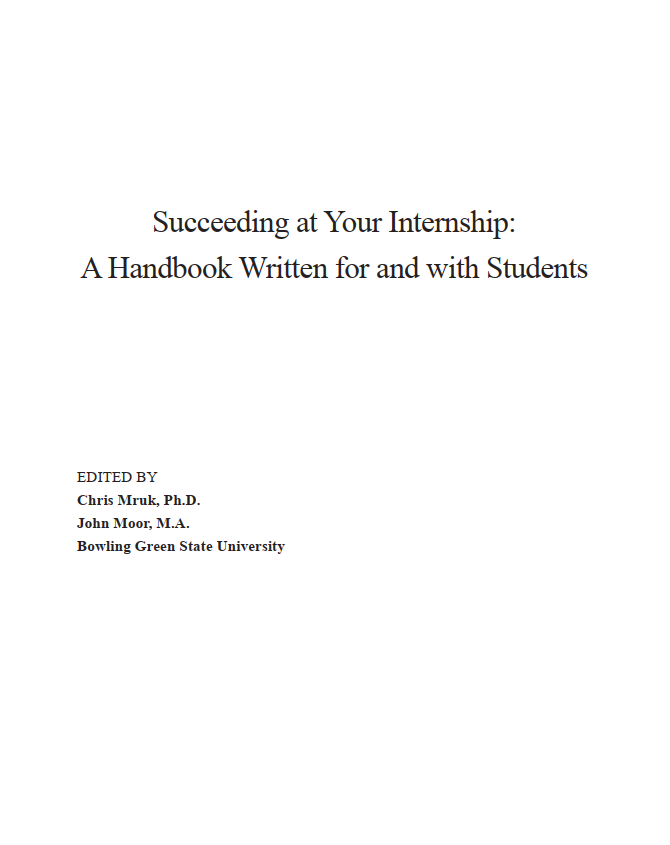
There are several textbooks for students whose majors include internships in human services, broadly defined, such as case management, counseling, criminal justice, and social work. hat work led to a structured narrative about basic practical topics, such as finding an internship, getting started there, making effective use of supervision, understanding ethics, appreciating cultural diversity, becoming competent, and completing the internship. The text includes descriptions, suggestions, and exercises. It may be used as either a primary course text or, due to its relative brevity, a supplemental one.
Human Behavior in the Social Environment
Human development, child growth and development.

This text is a presentation of how and why children grow, develop, and learn. We will look at how we change physically over time from conception through adolescence. We examine cognitive change, or how our ability to think and remember changes over the first 20 years or so of life. And we will look at how our emotions, psychological state, and social relationships change throughout childhood and adolescence.
Child, Family, and Community
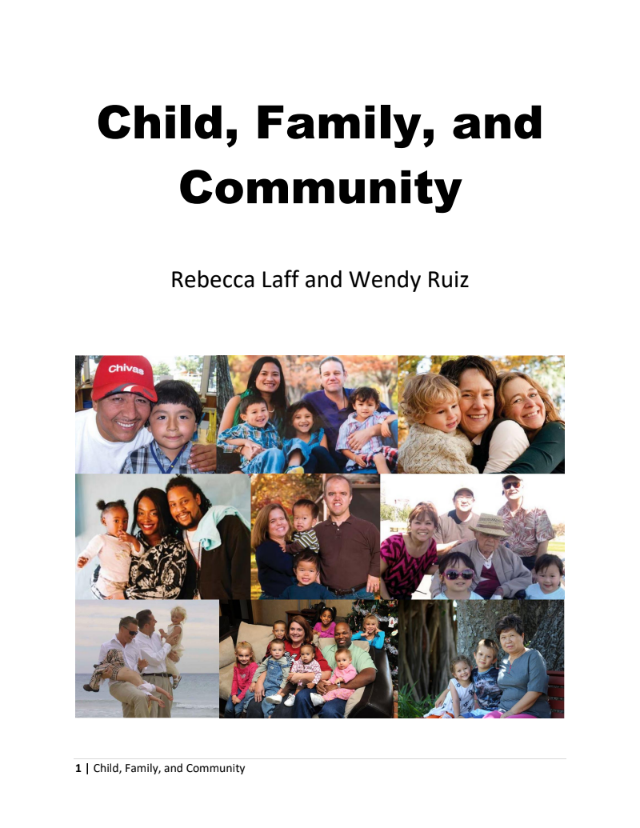
Over the years researchers have found the necessity to develop theories of behavior that are specific to family settings. These theories have been developed by people with a variety of areas of emphasis, from family therapists to gerontologists to child development specialists. In this chapter we will briefly discuss six such theories: Bioecological Model, Family Systems, Functionalism, Conflict Theory, Symbolic Interactionism, and Psychological Perspectives.
Human behavior in the social environment I

This textbook will explore theoretical perspectives in Social Work to help provide a foundation for organizing thoughts about client needs and issues they are seeking supports for. Theories will then be connected to important developmental, social, and cultural issues that present throughout each stage of life to create an overall picture of a client’s experience and how we can use this information to have a better understanding of how people we work with are influenced and why. Knowledge of typical development in each stage of life will also inform the Social Worker if any other supports, resources, or services may be needed.
Human Development

This course provides a bird’s eye view of major milestones and developmental tasks during each age period, starting at conception and ending with old age. As you discover age periods that you would like to learn more about, we invite you take any of the 400-level series of developmental courses covering specific developmental periods in more depth: Infancy, Early Childhood Development, Child Psychology, Adolescent Development, and Adult Development and Aging.
Human Development Life Span

Growth and development through the lifespan including physical, social, cognitive and neurological development. This course covers topics in each of these areas and provides an overview on subjects such as day care, education, disabilities, parenting, types of families, gender identity and roles, career decisions, illnesses and treatments, aging, retirement, generativity, and dying.
Lifespan Development: A Psychological Perspective

This textbook introduces the idea of lifespan development from a psychological perspective.
I ntercultural Communication

Intercultural Communication examines culture as a variable in interpersonal and collective communication. It explores the opportunities and problems arising from similarities and differences in communication patterns, processes, and codes among various cultural groups. It explores cultural universals, social categorization, stereotyping and discrimination, with a focus on topics including race, ethnicity, social class, religion, gender and sexuality as they relate to communication.
Beyond Race: Cultural Influences on Human Social Life

The book is supported by discussion of relevant theory and research in cultural sociology. Beyond Race: Cultural Influences on Human Social Life has stressed learner-centered teaching with the instructor taking on the role of a facilitator of learning. As such, it is expected the instructor will serve as the mediator between the content of this book and learners’ understanding of material on multiple and higher levels. This book does not offer a set of rules in teaching cultural sociology, but rather suggests content and applications to consider and modify as needed by the ever-changing dynamics of instructors and learners.
Human behavior in the social environment II

These materials will help students and instructors alike explore human behavior and how it is shaped and impacted by both traditional and non-traditional paradigms. This text will also support the reader in having a deeper understanding of how the environment, in all of its complexity, can affect individuals, families, groups, and communities.
It is my hope that the information contained in this book will help you, as a future social worker, approach client systems with empathy, understanding, and a compassionate curiosity that allows for comprehensive assessment, individualized approaches to treatment, and continuity of care.
Redesigning Lives: Learning How Space Impacts Residents in Affordable Supportive Housing Initiatives

Redesigning Lives: Learning How Space Impacts Residents in Affordable Supportive Housing Initiatives is a research project funded through a SSHRC Explore Grant. This research was a collaborative venture between the Faculty of Applied Science and Technology and the Faculty of Applied Health and Community Studies at Sheridan College. The goal of this research was to look at the impact that design can make to mental health and wellbeing and community-building through the lens of affordable and supportive housing. Bringing together the strengths of the two disciplines, this research looked at physical design and how it intersects with social determinants of health (SDOH).

International Social Work
Immigrant and refugee families: global perspectives on displacement and resettlement experiences.

Immigrant and Refugee Families: Global Perspectives on Displacement and Resettlement Experiences offers an interdisciplinary perspective on immigrant and refugee families’ challenges and resilience across multiple domains, including economic, political, health, and human rights. This new edition has been revised and updated from the original 2016 edition.
Intercultural learning: Critical preparation for international student travel

Intercultural learning: Critical preparation for international student travel aims to take students beyond practical preparation, to equip them with a critical lens through which to view and understand their international experiences. The book leads students toward a deeper understanding of culture and cultural difference through an exploration of challenging concepts such as imperialism, racism, privilege and intercultural practice.
As an adjunct to traditional approaches, the book adds a significant and valuable dimension to the process of preparing students for international study, increasing the potential for meaningful and transformative learning experiences.
Introduction to Social Work
Introduction to social work at ferris state.

This book was written by MSW students as their final project for their Capstone class. Students were each assigned a chapter of the book to write to show that they had achieved competency as a Master’s level social worker. Chapters were assigned based on student interest and experience in certain areas of the field.
Social Work & Social Welfare: Modern Practice in a Diverse World

This text is intended for use in introductory social work classes at the college level. Chapter topics include the foundations and history of social work and social welfare; generalist social work; ethics and values; social policy; race & ethnicity; sex, sexism, & gender; LGBTQ+ clients; poverty and financial assistance; school social work; families and children; healthcare and disabilities; substance use; mental health; criminal justice; and older clients.
A n Open Guide to IMC [integrated marketing & communications]

This Guide has been created for those with the fewest number of resources and the smallest of budgets. It is dedicated to educators, activists, non-profits, charities, advocacy groups, and social justice leaders who are putting in the work to make our world a better place. It was created by 34 Kwantlen Polytechnic University students during the summer of 2020.
Guidelines for Improving the Effectiveness of Boards of Directors of Nonprofit Organizations
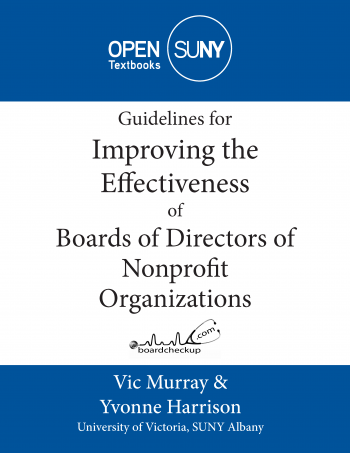
The purpose of this book is to help boards of directors of nonprofit organizations improve their performance after completing the online board self-assessment tool found at http://www.boardcheckup.com . However, it can also be used as a stand-alone resource for any board seeking to enhance its effectiveness in that it also contains the diagnostic questions on which the online tool is based.
Management Communication

Communication is the heart of business. Short emails, complex reports, private chats, impassioned pitches, formal presentations, and team meetings move information and ideas around an organization, define strategy, and drive decisions. Business communication is concise, direct, clear, and compelling.
Organizational Behavior
This OpenStax resource aligns to introductory courses in Organizational Behavior. The text presents the theory, concepts, and applications with particular emphasis on the impact that individuals and groups can have on organizational performance and culture. An array of recurring features engages students in entrepreneurial thinking, managing change, using tools/technology, and responsible management.
Principles of Management
Principles of Management is designed to meet the scope and sequence requirements of the introductory course on management. This is a traditional approach to management using the leading, planning, organizing, and controlling approach. Management is a broad business discipline, and the Principles of Management course covers many management areas such as human resource management and strategic management, as well as behavioral areas such as motivation. No one individual can be an expert in all areas of management, so an additional benefit of this text is that specialists in a variety of areas have authored individual chapters.
Political Ideologies and Worldviews: An Introduction

Political Ideologies and Worldviews: An Introduction takes a “pluralist” approach and, in addition to being the first open textbook on its subject, also pushes back against the Eurocentric tendencies of standard textbooks by including chapters on Indigenous worldviews and Confucianism. Providing the latest scholarship on “classical ideologies” (liberalism, conservatism, socialism, anarchism, etc.), the textbook also includes innovative chapters on populism, feminism, and multiculturalism, as well as looking at the future of ideologies in a globalized world. Joining together scholars from Canada and beyond, the text also contains discussion questions to help students and readers to think further.
Social problems: Continuity and change

Social Problems: Continuity and Change is a realistic but motivating look at the many issues that are facing our society today. As this book’s subtitle, Continuity and Change, implies, social problems are persistent, but they have also improved in the past and can be improved in the present and future, provided that our nation has the wisdom and will to address them.
State and Local Government and Politics: Prospects for Sustainability – 2nd Edition

Our book represents a unique opportunity for three generations of scholars to reflect upon and collectively consider their decades’ long research, and the meaning of that research to both the broader society and to students of contemporary politics. Nicholas Lovrich served as a graduate school mentor to Brent Steel, and Brent in turn mentored Christopher A. Simon as an undergraduate and guided him to study with Lovrich. Steel and Lovrich have collaborated on research for over 30 years, while Simon has frequently collaborated with Steel and Lovrich for nearly 20 years.
Sustaining the commons
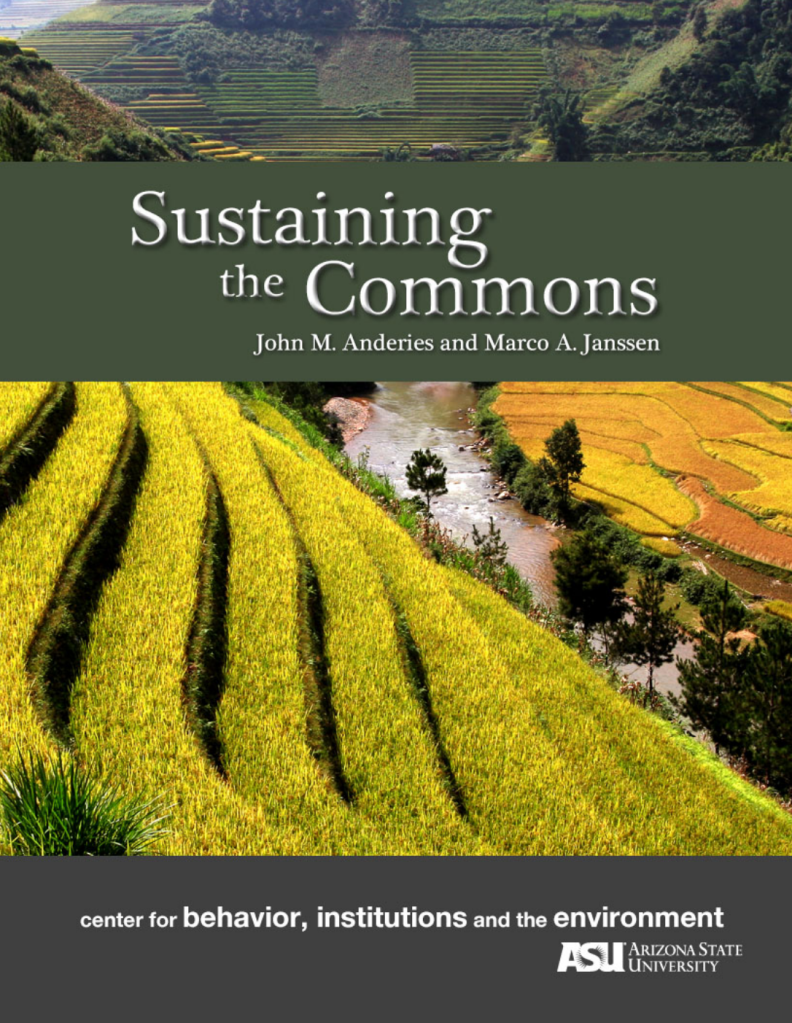
In this book you will learn about institutions–the rules and norms that guide the interactions among us. Those rules and norms can be found from traffic rules, rules in sports, regulations on when and where alcohol can be consumed, to constitutional rules that define who can become president of the United States of America. Rules and norms guide us to cooperative outcomes of so-called collective action problems. If we rely on voluntary contributions only to get anything done, this may not lead to the best results. But research also shows that coercion of people to comply to strict rules do not necessary lead to good outcomes. What combination of sticks and carrots is needed to be successful to solve collective action problems such as sustaining the commons?
Wellbeing, freedom, and social justice: The capability approach re-examined
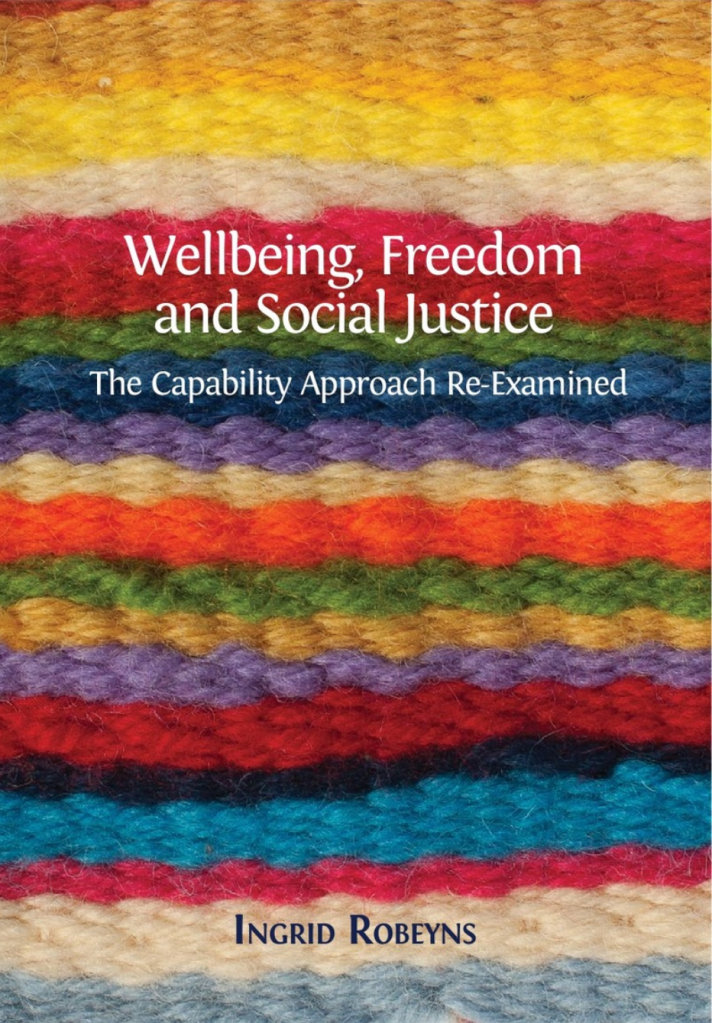
Wellbeing, Freedom and Social Justice: The Capability Approach Re-Examined is both an introduction to the capability approach and a thorough evaluation of the challenges and disputes that have engrossed the scholars who have developed it. Ingrid Robeyns offers her own illuminating and rigorously interdisciplinary interpretation, arguing that by appreciating the distinction between the general capability approach and more specific capability theories or applications we can create a powerful and flexible tool for use in a variety of academic disciplines and fields of policymaking.
The Palgrave Handbook of Family Policy

Uses a multilevel structure to combine insights on family outcomes. Examines supra-national organisations such as the European Commission, the Organisation for Economic Co-operation and Development (OECD), the World Bank (WB), the International Labour Organisation (ILO) and the United Nations (UN). Brings together representatives from various academic communities to form a coherent, interdisciplinary, cutting-edge collection
Communication
Interpersonal communication: a mindful approach to relationships.

Interpersonal Communication: A Mindful Approach to Relationships helps readers examine their own one-on-one communicative interactions using a mindfulness lens. The writing team of Jason S. Wrench, Narissra M. Punyanunt-Carter, and Katherine Thweatt incorporates the latest communication theory and research to help students navigate everyday interpersonal interactions. The 14 chapters in this book cover topics typically taught in an undergraduate interpersonal communication course: family interactions, interpersonal dynamics, language, listening, nonverbal communication, and romantic relationships, as well as exploring emerging areas such as self-compassion, body positivity, friendships, and “the dark side”. The writing takes on a purposefully informal tone to engage readers. Each chapter is broken into different sections that have unique instructional outcomes, key takeaways, and exercises, and concludes with real-world case studies and sample quiz questions. Also included is an extensive glossary with over 350 definitions.
Message Processing: The Science of Creating Understanding

Small Group Communication: Forming & Sustaining Teams

Small Group Communication: Forming & Sustaining Teams is an interdisciplinary textbook focused on communication in groups and teams. This textbook aims to provide students with theories, concepts, and skills they can put into practice to form and sustain successful groups across a variety of contexts.
Contemporary Families: An Equity Lens

This openly licensed text, created with students, approaches the current status of contemporary families in the U.S. from an equity lens. It asks and answers the questions “What do families need?” and “How do society and institutions support or get in the way of families getting what they need?”
Parenting & Family Diversity Issues

This book has been created for students and all individuals who work with children and families (e.g., educators, parents, caregivers, direct support workers, etc.) in diverse contexts. It is imperative to understand how and what factors may influence child outcomes across the lifespan. Therefore, key concepts related to parenting, child-rearing, care-giving, and parenting education are outlined in this textbook to provide historical, theoretical, and practical perspectives across vast settings and developmental domains.
A primer on social work practice evaluation: How to participate in the process of evidence-based practice

This primer supports social workers in learning the basics of evaluation as it relates to engaging in evidence-based practice at the micro, mezzo and macro levels. It is designed for students who have already had an introductory research methods course who are now engaged in an evaluation project or course.
Abnormal Psychology – 2nd Edition
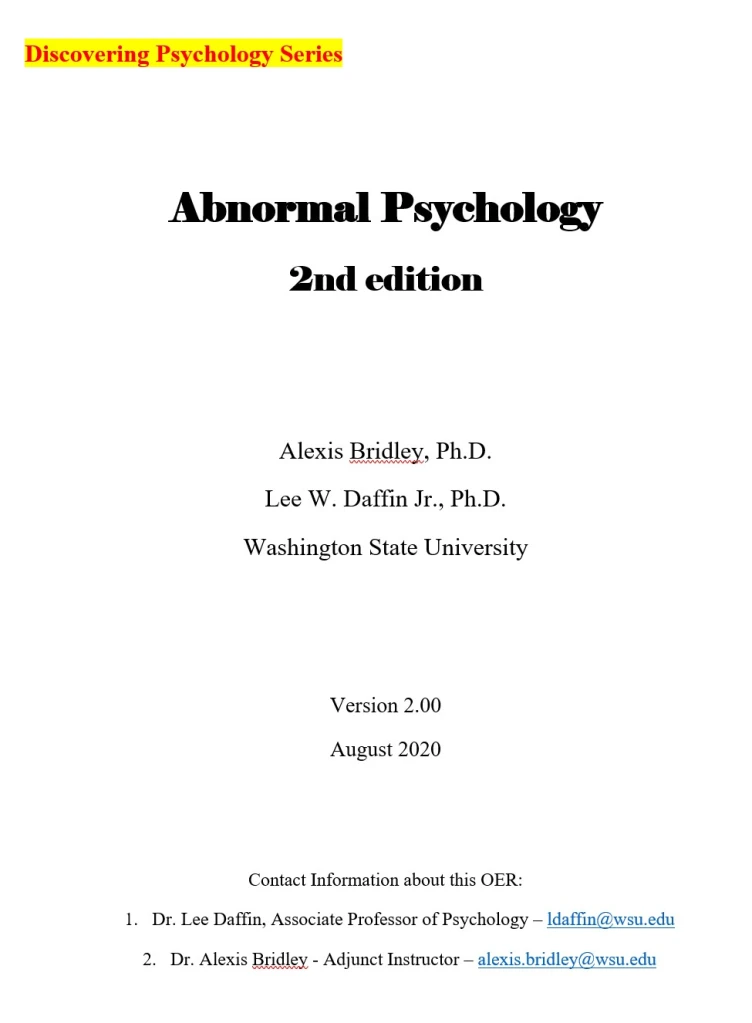
The book tackles the difficult topic of mental disorders in 15 modules. This journey starts by discussing what abnormal behavior is by attempting to understand what normal behavior is. Models of abnormal psychology and clinical assessment, diagnosis, and treatment are then discussed. With these three modules completed, the authors next explore several classes of mental disorders in 5 blocks. Block 1 covers mood, trauma and stressor related, and dissociative disorders. Block 2 covers anxiety, somatic symptom, and obsessive-compulsive disorders. Block 3 covers eating and substance-related and addictive disorders. Block 4 tackles schizophrenia spectrum and personality disorders. Finally, Block 5 investigates neurocognitive disorders and then ends with a discussion of contemporary issues in psychopathology. Disorders are covered by discussing their clinical presentation and DSM Criteria, epidemiology, comorbidity, etiology, and treatment options.
Introduction to Community Psychology
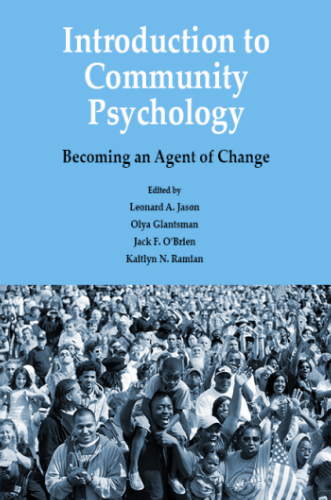
This textbook will show you how to comprehensively analyze, investigate, and address escalating problems of economic inequality, violence, substance abuse, homelessness, poverty, and racism. It will provide you with perspectives and tools to partner with community members and organizations to promote a fair and equitable allocation of resources and opportunities.
Social Work, Sociometry, and Psychodrama: Experiential Approaches for Group Therapists, Community Leaders, and Social Workers

Is the first book on the intersection of the fields of social work, sociometry, and psychodrama. Provides an overview of integrated sociometry and psychodrama tools into practice. Summarizes Moreno’s work on sociometry, psychodrama, and group psychotherapy.
Substance use
Drugs, health & behavior.

In this open textbook, you will find seven chapters. What are Drugs? A Brief Introduction How the Body Works in Relation to Drugs Types of Drugs Commonly Misused Prescriptions, Over The Counter Medications, and Supplements Law, Regulation, and Social Policy Use, Abuse, Addiction & Treatment Prevention
Foundations of Addiction Studies

In this book, we want to bring to life the core concepts at the heart of addiction. You may have friends or family members struggling with an addiction, or you yourself may have problems with addiction. You might be interested in working to help people in recovery, or you are simply curious to know more about this issue. Whatever the case, this book will introduce key terminology and research to help you define, discuss, diagnose, and deal with this problem.
Treatment of Addictions, Individual and Group

The Treatment of Addictions, Individual and Group Alternative Training online textbook has been developed as a resource for students in the Chemical Dependency Professional Alternative Training courses at Whatcom Community College. This online textbook hosts a variety of learning resources, such as articles, links to websites, webinars, videos, and infographics that relate to course topics. This text covers evidenced based approaches and systems of care in individual and group addiction treatment. Systems of care, historical models, healthy system recovery, and new peer supports are explored.
Domestic Violence in Immigrant Communities: Case Studies

“Domestic Violence in Immigrant Communities: Case Studies” is a freely accessible eCampus Ontario Pressbook containing case studies of immigrant women experiencing domestic violence to be used as educational materials. The book highlights the complexity of domestic violence cases in immigrant communities and the different legal processes that these women encounter in seeking justice and the challenges they face in relation to re-establishing their own lives and the lives of their children. The book contains questions for reflection; a description of legal processes involved in DV cases, and a glossary of the terms used throughout the case studies.
Trauma-Informed Care in Behavioral Health Services
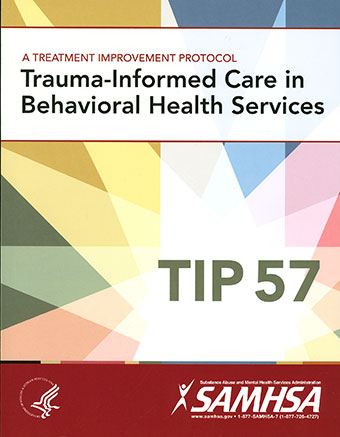
This Treatment Improvement Protocol (TIP) is divided into three parts: • Part 1: A Practical Guide for the Provision of Behavioral Health Services • Part 2: An Implementation Guide for Behavioral Health Program Administrators • Part 3: A Review of the Literature
Making Sense of a Global Pandemic: Relationship Violence & Working Together Towards a Violence Free Society

This on-line book provides a wealth of information on relationship violence focusing amongst other things on definitions; the scope of the problem, theoretical frameworks, interventions and prevention strategies. It provides information on legal statutes (Provincial; Federal and International) and contains numerous links to additional resources to inform the reader. The book also highlights some emerging issues such as the importance of cultural safety; relationship violence in the work place and on post-secondary campuses. I was also interested to read the section on male victims and the dearth of services available to this segment of the population. Similarly, the importance of engaging male perpetrators if we are to effect meaningful and lasting change at a societal level.
Trauma and Resilience Among Displaced Populations: A Sociocultural Exploration
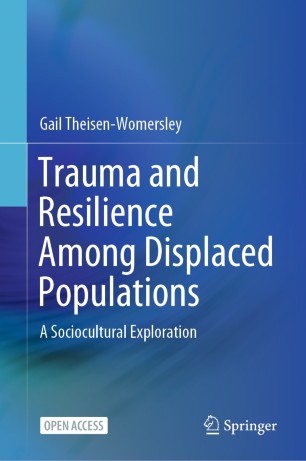
Includes cases based on the author’s own 10-year experience working in emergency contexts with displaced populations in 11 countries across the world. Focuses on the mental health of displaced populations from a uniquely psychological, sociocultural, and ecological perspective. Provides practical applications for non-specialist professionals working with displaced populations in complex institutional systems
Research methods
Foundations of social work research.

This textbook was created to provide an introduction to research methods for BSW and MSW students, with particular emphasis on research and practice relevant to students at the University of Texas at Arlington. It provides an introduction to social work students to help evaluate research for evidence-based practice and design social work research projects. It can be used with its companion, A Guidebook for Social Work Literature Reviews and Research Questions by Rebecca L. Mauldin and Matthew DeCarlo, or as a stand-alone textbook.
Graduate research methods in social work: A project-based approach
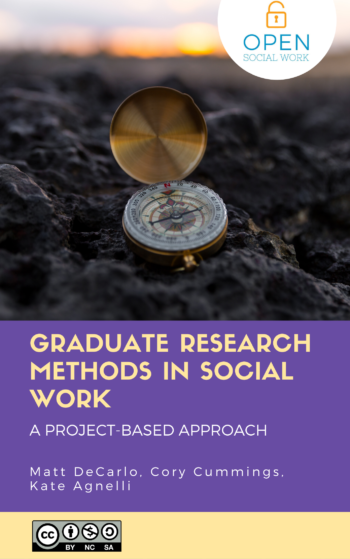
Our textbook guides graduate social work students step by step through the research process from conceptualization to dissemination. We center cultural humility, information literacy, pragmatism, and ethics and values as core components of social work research.
Scientific Inquiry in Social Work

As an introductory textbook for social work students studying research methods, this book guides students through the process of creating a research project. Students will learn how to discover a researchable topic that is interesting to them, examine scholarly literature, formulate a proper research question, design a quantitative or qualitative study to answer their question, carry out the design, interpret quantitative or qualitative results, and disseminate their findings to a variety of audiences. Examples are drawn from the author’s practice and research experience, as well as topical articles from the literature.
Social science research: Principles, methods and practices

This book is designed to introduce doctoral and graduate students to the process of scientific research in the social sciences, business, education, public health, and related disciplines. This book is based on my lecture materials developed over a decade of teaching the doctoral-level class on Research Methods at the University of South Florida. The target audience for this book includes Ph.D. and graduate students, junior researchers, and professors teaching courses on research methods, although senior researchers can also use this book as a handy and compact reference.
Research Methods in Psychology: 4th edition

A comprehensive textbook for research methods classes. A peer-reviewed inter-institutional project.
Doing Human Service Ethnography
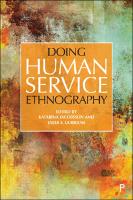
Human service work is performed in many places – hospitals, shelters, households – and is characterised by a complex mixture of organising principles, relations and rules. Using ethnographic methods, researchers can investigate these site-specific complexities, providing multi-dimensional and compelling analyses. Bringing together both theoretical and practical material, this book shows researchers how ethnography can be carried out within human service settings. It provides an invaluable guide on how to apply ethnographic creativeness and offers a more humanistic and context-sensitive approach in the field of health and social care to generating valid knowledge about today’s service work.
A Quick Guide to Quantitative Research in the Social Sciences

This resource is intended as an easy-to-use guide for anyone who needs some quick and simple advice on quantitative aspects of research in social sciences, covering subjects such as education, sociology, business, nursing. If you area qualitative researcher who needs to venture into the world of numbers, or a student instructed to undertake a quantitative research project despite a hatred for maths, then this booklet should be a real help.
Statistics Video Textbook

This video textbook covers the main topics in an introductory statistics course. It focuses on visualizing the core logic behind how inferential testing works. The core logic is visualized by showing the relationships among three kinds of distributions: (1) distributions of observed sample data, (b) sampling distributions, and (c) population distributions. After laying the conceptual foundations (e.g., variables, histograms, z tables), the core logic is explained for the z test, t tests, ANOVAs, correlation, and regression. Chi square tests are also introduced at a basic level. The content emphasizes statistics in psychology, but its relevance is general because statistics are the same across fields.
Collaborative Statistics

Collaborative Statistics was written by Barbara Illowsky and Susan Dean, faculty members at De Anza College in Cupertino, California. The textbook was developed over several years and has been used in regular and honors-level classroom settings and in distance learning classes. Courses using this textbook have been articulated by the University of California for transfer of credit. The textbook contains full materials for course offerings, including expository text, examples, labs, homework, and projects. A Teacher’s Guide is currently available in print form and on the Connexions site at and supplemental course materials including additional problem sets and video lectures are available. The on-line text for each of these collections collections will meet the Section 508 standards for accessibility.
Statistics Software
Learning statistics with jasp.

Learning Statistics with JASP is a free textbook covering the basics of statistical inference for beginners in psychology and related applied disciplines. It uses the free software package JASP. Written in a lively, conversational style, it provides the reader with a perfect balance of readability and rigor, and gives students a modern view of statistical inference in the psychological and behavioral sciences.
Learning Statistics with R: A tutorial for psychology students and other beginners
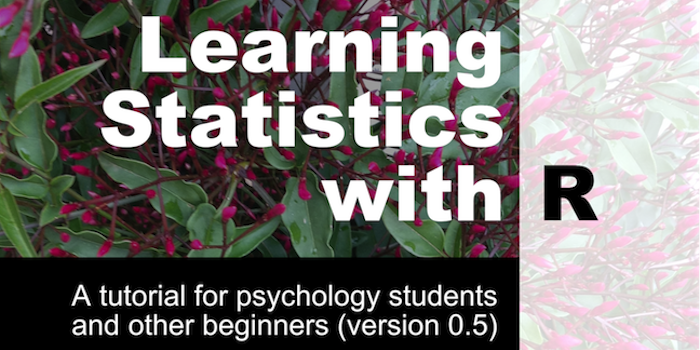
Learning Statistics with R covers the contents of an introductory statistics class, as typically taught to undergraduate psychology students, focusing on the use of the R statistical software. The book discusses how to get started in R as well as giving an introduction to data manipulation and writing scripts. From a statistical perspective, the book discusses descriptive statistics and graphing first, followed by chapters on probability theory, sampling and estimation, and null hypothesis testing. After introducing the theory, the book covers the analysis of contingency tables, t-tests, ANOVAs and regression. Bayesian statistics are covered at the end of the book.
Quantitative Research Methods for Political Science, Public Policy and Public Administration (With Applications in R)

The focus of this book is on using quantitative research methods to test hypotheses and build theory in political science, public policy and public administration. It is designed for advanced undergraduate courses, or introductory and intermediate graduate-level courses. The first part of the book introduces the scientific method, then covers research design, measurement, descriptive statistics, probability, inference, and basic measures of association. The second part of the book covers bivariate and multiple linear regression using the ordinary least squares, the calculus and matrix algebra that are necessary for understanding bivariate and multiple linear regression, the assumptions that underlie these methods, and then provides a short introduction to generalized linear models.
R for Data Science

This is the website for “R for Data Science”. This book will teach you how to do data science with R: You’ll learn how to get your data into R, get it into the most useful structure, transform it, visualise it and model it. In this book, you will find a practicum of skills for data science. Just as a chemist learns how to clean test tubes and stock a lab, you’ll learn how to clean data and draw plots—and many other things besides. These are the skills that allow data science to happen, and here you will find the best practices for doing each of these things with R. You’ll learn how to use the grammar of graphics, literate programming, and reproducible research to save time. You’ll also learn how to manage cognitive resources to facilitate discoveries when wrangling, visualising, and exploring data. **This Book is licensed under a No-Derivatives license that does not allow for revising, remixing…basically anything other than redistributing and accessing this resource.
SPSS 23: A Basic Tutorial

This book is intended for those who want to learn the basics of SPSS. It can be used as a text in a class or by those working independently. Each chapter has instructions that guide you through a series of problems, as well as graphics showing you what your screen should look like at various steps in the process. There are also exercises at the end of each chapter for further practice and more exercises and teaching modules are on the Teaching Resources page of the Social Science Research and Instructional Center (SSRIC) website.
School Social Work
Trauma-informed school practices: building expertise to transform schools.
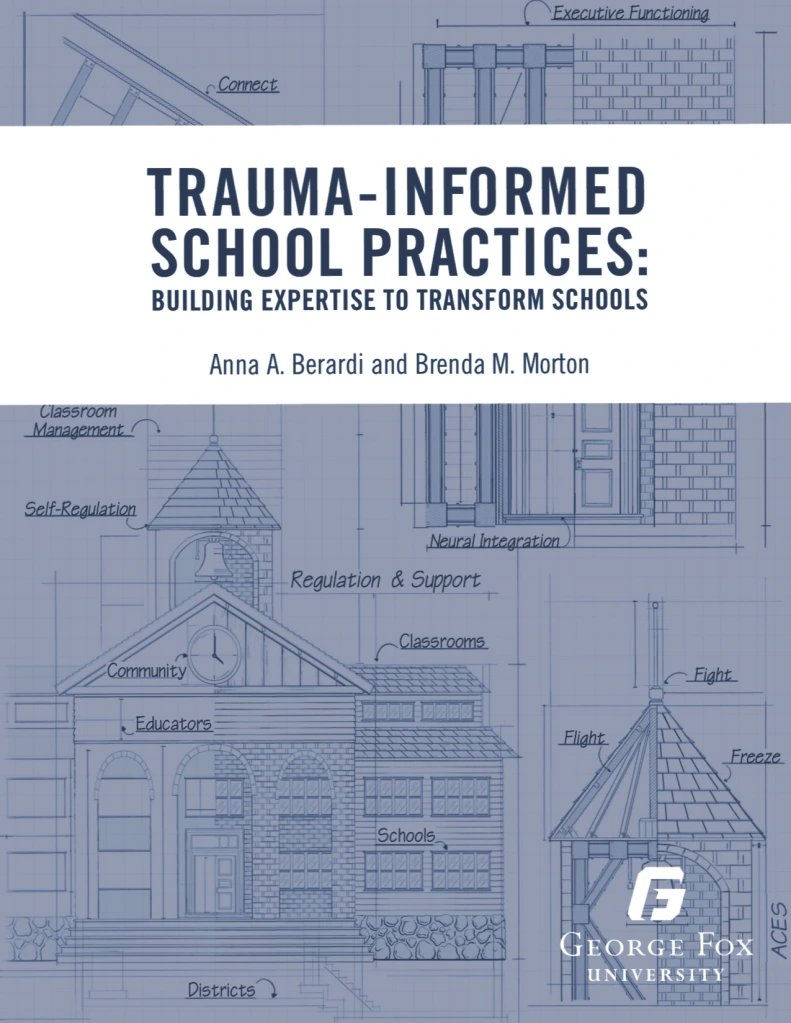
The primary focus is on identifying and applying trauma-informed educator competencies needed to transform districts, schools, educators, classrooms, and the field of education itself, while also including community members such as parents and board members in these processes – a total system makeover. At the conclusion of this text, the student, educator, or mental health professional will have a deeper understanding of what trauma-informed practice requires of them. This includes practical strategies on how to transform our learning communities in response to the devastating effect of unmitigated stress and trauma on our student’s ability to learn and thrive throughout the lifespan.
Trauma Informed Behaviour Support: A Practical Guide to Developing Resilient Learners
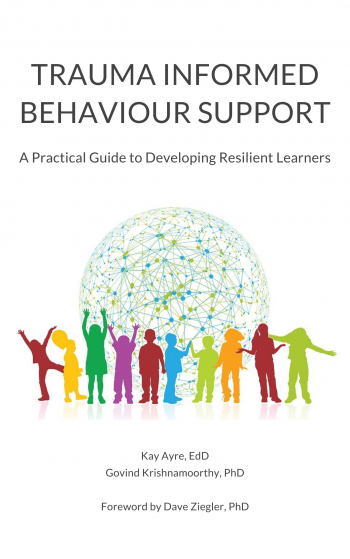
If we want to impact the world of children who have experienced trauma then we must change not only ourselves and our classroom, but we must change our schools, our organisations, and our systems of care for children. We must all speak out for these children who have no voice to bring awareness of new educational and mental health approaches to children who will become tomorrow’s failed adults unless they receive our understanding and our help.
Social Justice
Introduction to design equity.

Why do affluent, liberal, and design-rich cities like Minneapolis have some of the biggest racial disparities in the country? How can designers help to create more equitable communities? Introduction to Design Equity, an open access book for students and professionals, maps design processes and products against equity research to highlight the pitfalls and potentials of design as a tool for building social justice.
Introduction to Women, Gender, Sexuality Studies

This textbook introduces key feminist concepts and analytical frameworks used in the interdisciplinary Women, Gender, Sexualities field. It unpacks the social construction of knowledge and categories of difference, processes and structures of power and inequality, with a focus on gendered labor in the global economy, and the historical development of feminist social movements. The book emphasizes feminist sociological approaches to analyzing structures of power, drawing heavily from empirical feminist research.
Global Women’s Issues: Women in the World Today

We cannot solve global challenges unless women participate fully in efforts to find solutions. Female participation in the private sector is a crucial economic driver for societies worldwide. Economic security benefits every facet of a woman’s life, with positive effects on the health, education and vitality of families. Learn about women who are changing their societies for the better. This book is based on the twelve critical areas of concern identified in the Beijing Declaration and Platform for Action at the Fourth World Conference on Women in Beijing in 1995.
Slavery to Liberation: The African American Experience

Slavery to Liberation: The African American Experience gives instructors, students, and general readers a comprehensive and up-to-date account of African Americans’ cultural and political history, economic development, artistic expressiveness, and religious and philosophical worldviews in a critical framework. It offers sound interdisciplinary analysis of selected historical and contemporary issues surrounding the origins and manifestations of White supremacy in the United States. By placing race at the center of the work, the book offers significant lessons for understanding the institutional marginalization of Blacks in contemporary America and their historical resistance and perseverance.
Supporting Individuals with Intellectual Disabilities & Mental Illness: What Caregivers Need to Know

This multidisciplinary resource develops topics of interest to all those who care about and for individuals with co-occurring intellectual disabilities and mental illness. Each chapter presents current evidence informed practice knowledge. Each topic is also presented with audio enabled text boxes emphasizing ‘Key Points for Caregivers.’ For those who are interested in background knowledge, we provided the comprehensive literature base. And, for those interested mainly in ‘what to do,’ we provided text box summaries for reading and listening.
The American LGBTQ Rights Movement: An Introduction
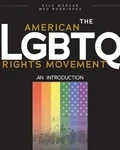
The American LGBTQ Rights Movement: An Introduction is a peer-reviewed chronological survey of the LGBTQ fight for equal rights from the turn of the 20th century to the early 21st century. Illustrated with historical photographs, the book beautifully reveals the heroic people and key events that shaped the American LGBTQ rights movement. The book includes personal narratives to capture the lived experience from each era, as well as details of essential organizations, texts, and court cases that defined LGBTQ activism and advocacy.
Narrowed Lives: Meaning, Moral Value, and Profound Intellectual Disability
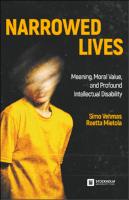
What is day-to-day life like for people with profound intellectual and multiple disabilities who live in group homes? How do they express their desires and wishes? How do care workers think about them and treat them? Do they have basic rights to activities most of us take for granted: activities like sociability, sexuality, and moral affirmation? Narrowed Lives is an illuminating portrait of what life is like in Finnish group homes where adults who have profound intellectual and multiple disabilities live their lives. Based upon ethnographic data, it documents how care workers strive to guarantee individuality and dignity against a backdrop of scarce resources and misguided policies. This book argues that the lives of people with profound disabilities need not be determined by their impairments. It calls for a re-evaluation of disability policy so that its underlying conviction of people with profound intellectual and multiple disabilities as equally valuable fellow humans would materialise in practice. This novel and accessible book combines ethnography and philosophy, and will be of interest to researchers and students in disability studies, special education and philosophy, as well as parents, professionals and policy makers.
Opening Eyes onto Inclusion and Diversity
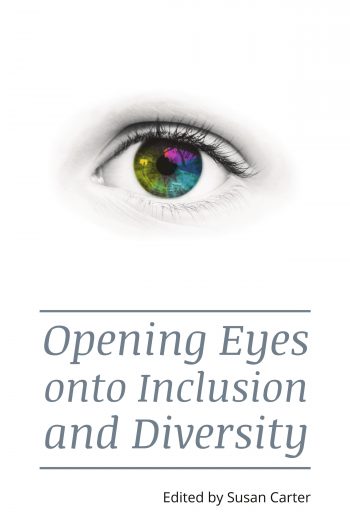
In Australia and internationally much still needs to occur to promote inclusive practices in education and society with many educators not feeling equipped to recognise or appreciate diversity or cater effectively for inclusion (Hardy & Woodcock, 2015). It is into this space that a University of Southern Queensland team of researchers, practitioners, and academics intends to contribute an open textbook “Opening Eyes onto Inclusion and Diversity”. With embedded audio–visual components, the Open Textbook is designed to enhance the quality of the reader’s experience with each chapter posing key understandings underpinning inclusion and diversity. Readers are encouraged to answer questions on culture, special learning needs, varied educational contexts, gender diversity and more. The key expected outcome of this open textbook is to engage readers in making meaning of inclusion and diversity and applying their learning to their own individual contexts.
Sustainability
Climate toolkit: a resource manual for science and action – version 2.0.

The Climate Toolkit is a resource manual designed to help the reader navigate the complex and perplexing issue of climate change by providing tools and strategies to explore the underlying science. As such it contains a collection of activities that make use of readily available on-line resources developed by research groups and public agencies. These include web-based climate models, climate data archives, interactive atlases, policy papers, and “solution” catalogs. Unlike a standard textbook, it is designed to help readers do their own climate research and devise their own perspective rather than providing them with a script to assimilate and repeat.
Community resilience to climate change: Theory, research and practice
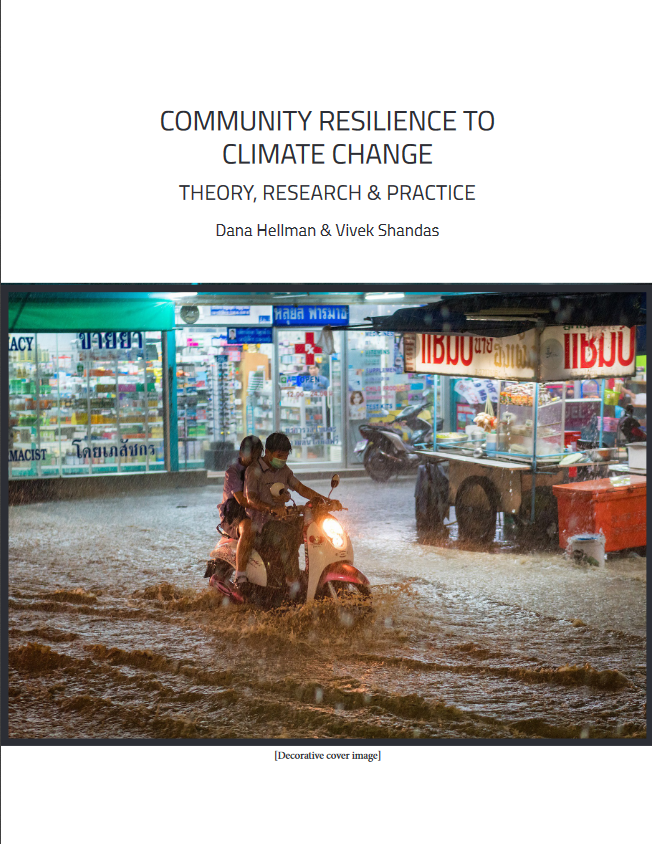
This reader is an Open Educational Resource, meant to accompany a graduate or higher-level undergraduate university course in climate change resilience, adaptation, and/or planning. While the material is geared toward students in urban and regional planning, it may also be of interest to students of urban studies, public health, geography, political science, sociology, risk management, and others.
Each section of this volume includes (1) an introductory summary, (2) a reading list with full text articles, (3) student exercises meant to enhance understanding and facilitate in-class discussion, and (4) additional discussion prompts or activities for instructors to use in class. The format of materials is intended to convey key concepts, while leaving ample space for student exploration, discourse, and creativity. Lessons may culminate in an applied, imaginative final project, a sample framework of which is provided at the end of Section VI.
Sustainability: A comprehensive foundation

With “Sustainability: A Comprehensive Foundation”, first and second-year college students are introduced to this expanding new field, comprehensively exploring the essential concepts from every branch of knowledge – including engineering and the applied arts, natural and social sciences, and the humanities. As sustainability is a multi-disciplinary area of study, the text is the product of multiple authors drawn from the diverse faculty of the University of Illinois: each chapter is written by a recognized expert in the field.
This text is designed to introduce the reader to the essential concepts of sustainability. This subject is of vital importance seeking as it does to uncover the principles of the long-term welfare of all the peoples of the planet but is only peripherally served by existing college textbooks.
Share this:
- Already have a WordPress.com account? Log in now.
- Subscribe Subscribed
- Copy shortlink
- Report this content
- View post in Reader
- Manage subscriptions
- Collapse this bar
Data Collection for Field Reports in Social Work Practice
- First Online: 22 March 2024
Cite this chapter

- M. Rezaul Islam ORCID: orcid.org/0000-0002-2217-7507 2
21 Accesses
This chapter equips social work students with essential skills for gathering and utilizing data effectively. It begins by providing an overview of both qualitative and quantitative data collection techniques, ensuring that students are well-versed in diverse methods. The chapter then focuses on the practical aspect of data collection, emphasizing the use of data collection tools and instruments to streamline the process and enhance data quality. Through this chapter, social work students gain the knowledge and skills necessary to collect, manage, and utilize data to inform their practice, enhancing their ability to make data-driven decisions in the field.
This is a preview of subscription content, log in via an institution to check access.
Access this chapter
- Available as EPUB and PDF
- Read on any device
- Instant download
- Own it forever
- Durable hardcover edition
- Dispatched in 3 to 5 business days
- Free shipping worldwide - see info
Tax calculation will be finalised at checkout
Purchases are for personal use only
Institutional subscriptions
Akhter, S. (2022). Key informants’ interviews. In M. R. Islam, N. A. Khan, & R. Baikady (Eds.), Principles of social research methodology. Springer. Principles of social research methodology (pp. 389–403). Springer Nature Singapore.
Google Scholar
Azam, M. G. (2022). In-depth case interview. In M. R. Islam, N. A. Khan, & R. Baikady (Eds.), Principles of social research methodology. Springer. Principles of social research methodology (pp. 347–364). Springer Nature Singapore.
Gray, M., Plath, D., & Webb, S. (2009). Evidence-based social work: A critical stance . Routledge.
Book Google Scholar
Islam, M. R. (2022). Participatory research. In M. R. Islam, N. A. Khan, & R. Baikady (Eds.), Principles of social research methodology. Springer. Principles of social research methodology (pp. 291–311). Springer Nature Singapore.
Khan, N. A., & Abedin, S. (2022). Focus group discussion. In M. R. Islam, N. A. Khan, & R. Baikady (Eds.), Principles of social research methodology. Springer. Principles of social research methodology (pp. 377–387). Springer Nature Singapore.
Margaryan, A., Littlejohn, A., & Vojt, G. (2011). Are digital natives a myth or reality? University students’ use of digital technologies. Computers & Education, 56 (2), 429–440.
Article Google Scholar
Pollock, K. (2012). Procedure versus process: Ethical paradigms and the conduct of qualitative research. BMC Medical Ethics, 13 , 1–12.
Download references
Author information
Authors and affiliations.
Institute of Social Welfare and Research, University of Dhaka, Dhaka, Bangladesh
M. Rezaul Islam
You can also search for this author in PubMed Google Scholar
Review Questions
What is the primary purpose of data collection in social work field practice?
Name two qualitative data collection techniques discussed in this chapter and briefly explain their applications.
Briefly outline the ethical considerations related to participant autonomy and privacy in data collection.
Why is it beneficial to integrate mixed-methods approaches in social work field research?
Discuss the role of technology in data collection for social work field practices, highlighting its advantages and potential ethical considerations.
Multiple Choice Questions
What is the main advantage of utilizing mixed-methods approaches in social work field research?
Simplicity in data analysis
Increased depth and breadth of understanding
Limited perspectives on the research question
Narrow scope of data collection
Which of the following is an example of a qualitative data collection technique?
Statistical analysis
Content analysis
Standardized tests
What is a key ethical consideration in technology-mediated data collection?
Limited access to data
Participant anonymity
Informed consent
Avoidance of data encryption
In quantitative data collection, what method involves asking participants to respond to a series of predetermined questions?
Participant observation
Focus group discussions
Surveys and questionnaires
Key informant interviews
Why is ensuring participant autonomy important in social work field research?
It protects the participants’ rights and choices.
It simplifies the research process.
It reduces the need for informed consent.
It limits the diversity of collected data.
Rights and permissions
Reprints and permissions
Copyright information
© 2024 The Author(s), under exclusive license to Springer Nature Switzerland AG
About this chapter
Islam, M.R. (2024). Data Collection for Field Reports in Social Work Practice. In: Fieldwork in Social Work. Springer, Cham. https://doi.org/10.1007/978-3-031-56683-7_9
Download citation
DOI : https://doi.org/10.1007/978-3-031-56683-7_9
Published : 22 March 2024
Publisher Name : Springer, Cham
Print ISBN : 978-3-031-56682-0
Online ISBN : 978-3-031-56683-7
eBook Packages : Social Sciences
Share this chapter
Anyone you share the following link with will be able to read this content:
Sorry, a shareable link is not currently available for this article.
Provided by the Springer Nature SharedIt content-sharing initiative
- Publish with us
Policies and ethics
- Find a journal
- Track your research

- University of Texas Libraries
- UT Libraries
Social Work Research
- Getting Started
- Encyclopedias & Handbooks
- Evidence Based Practice
- Peer Review & Evaluation
- Reading Scholarly Articles
- Books & Dissertations
- Data and Statistics
- Film & Video
- Policy & Government Documents
- Trabajo Social
- Citing & Citation Management
- Research Funding
- Open Access
- Choosing & Assessing Journals
- Increasing Access to Your Work
- Tracking Your Impact
- Systematic Reviews
- Tests & Measures
Getting Started with Social Work Research
- Video Tutorials
- Understanding the Libraries "Basic" Search
- The Research Process
- What is a literature review?
- What is a Research Question?
- Turn a topic into a Search Strategy
- Keyword Brainstorming
- Search Tips
The search box on the library homepage provides a basic search across library holdings. See the guide below for an explanation of how to effectively use the basic search:
- Library Search Help
As you work toward completing your research projects, remember that the research process is NOT linear. It's usually more of a circular process and there may be many times where you jump back and forth between the stages of your research. While not everyone's research process will look exactly the same, the following model can give you a better idea of how the research process often works.

Think of scholarly papers like a conversation. A paper takes a look at what people are saying on a particular topic and then adds something new to the conversation based on their own research. A literature review is how scholars get caught up on the conversation so they will know what to say or ask next.
A literature review can be just a simple summary of the sources, but it usually has an organizational pattern and combines both summary and synthesis.
A summary is a recap of the important information of the source, but a synthesis is a re-organization, or a reshuffling, of that information. It might give a new interpretation of old material or combine new with old interpretations. Or it might trace the intellectual progression of the field, including major debates.
- APA Literature Review Template Note: not yet updated for APA 7th edition
A research question is what forms and guides your literature review. It is the question that you want the literature to answer for you. A research question should be specific, focused, and concise.
To develop a research question, start with a general topic of interest to you. You'll want to do some preliminary and background research on this topic to think through what specific questions you might have.
Sample Topic: impact of social media on adolescent physical activity
Sample Research Question: Can social media serve as an effective tool for increasing physical activity among adolescents?
Need more guidance on developing your topic into a research question? Check out this video from the library at Northern Kentucky University.
In order to search most effectively for articles that pertain to your research topic, take a little time at the beginning of your project to plan out your search strategy.
1. Break up your topic/research question into it's primary concepts
- i.e. What impact does tobacco use have on the lung health of teenagers?
- Population - teenagers
- Problem - tobacco use
- Outcome - lung health
2. Brainstorm synonyms for your terms (see more in next tab)
- i.e. teenagers, teens, adolescents, youth, young adults, juvenile
3. Add quotation marks around exact phrases and be sure to include both singular and plural
- i.e. "young adults", "young adult"
4. Search one concept at a time using ORs to include all of your synonyms and then combine your searches with AND
- Search 1: teenagers OR teens OR adolescents OR youth OR "young adults" OR "young adult" OR juveniles
- Search 2: tobacco OR smoking OR vaping OR cigarettes OR nicotine
- Search 3: lung health OR "respiratory health" OR "respiratory distress" OR dyspnea OR asthma OR "pulmonary disorder" OR "pulmonary disorders" OR "pulmonary disease" OR "pulmonary diseases"
1. Save time, prepare to research!
- Break your research question into key concepts (you'll connect these in your paper to make an original argument)
- For each of these concepts, brainstorm multiple keywords
- Try this keyword tool to brainstorm online and send the results to yourself.
2. Combine keywords using AND and OR :
- Too many results? Try using quotation marks around an exact phrase. Ex: "students with disabilities"
- Still too many results? Narrow using AND . Ex: "students with disabilities" AND "assistive technology"
- Too few results? Broaden using OR . Ex: "students with disabilities" AND (campus OR college OR university OR higher education)
- Put parentheses around synonyms.
- The asterisk finds multiple endings from a root word. Ex: wom* will bring back women, woman's, wombat, etc.
3. Brush up on the search tools available:
- Here are search tips for Google .
- Databases often include their own search tips. Tip: Look for a help link or a gear symbol.
Interfaces and search options vary across databases, but best practices for searching are relatively consistent across interfaces. No matter which database you choose, remember these important tips...
1) Don't search wth your topic as a single phrase! Determine the key concepts of your topic. Then place each concept in its own search bar. For example...

2) Use ORs to string together synonyms or related terms for core concepts...

3) Use truncation, when appropriate. Adding an * to the end of a word will catch all forms of that word. For example, teach* will return teach, teachers, teaching , etc.

4) Use proximity searches to force a relationship between two terms. This isn't always needed, but is sometimes super helpful. Completion is a common word that may come up in many context. The search below means that the word complete or completion must appear within two words of college in the article title and abstracts.

5) Look for the "peer reviewed" limit in each database. You can set this limit on the main search screen (before you search) or narrow your results after you've started your search.
6) Set date limits as appropriate for your topic..

Writing a Research Paper
- Steps for Writing a Research Paper Step by Step instructions on how to write a research paper by the University Writing Center
Need Help? Ask A Librarian
Chat With Us
EID login required

Related Guides
- Public Health
- Counseling & Therapy
- African and African Diaspora Studies
- Disability Studies
- Last Updated: Jan 26, 2024 7:14 AM
- URL: https://guides.lib.utexas.edu/socialwork

Download Free
Best Research Tools for Social Work Students
It's free and super easy to set up
As a social work student, conducting research is an essential part of your education and professional development. In order to be effective in your practice and make informed decisions, it is crucial to have access to reliable research tools and resources. In this article, we will discuss the best research tools that every social work student should know about.
Understanding the Importance of Research in Social Work
Research is a fundamental component of social work, and it serves several purposes. Firstly, it helps to shape social policy and practice by providing evidence-based knowledge. Secondly, it helps social workers to identify and evaluate interventions that best meet the needs of the individuals and communities they work with. Lastly, research plays a crucial role in ensuring the ethical practice of social work.
The role of research in social work practice
Research is essential in social work practice as it provides evidence that supports the effectiveness of particular interventions, policies, and programs. For instance, research may show that a particular approach to treating addiction in adolescents has better outcomes than other methods. Social workers use this evidence to help clients make informed choices about treatment options and interventions that are likely to produce the most positive results.
Moreover, research helps social workers to stay up-to-date with the latest developments in their field. By keeping abreast of the latest research findings, social workers can provide their clients with the most effective and evidence-based interventions. They can also contribute to the development of new interventions by conducting research themselves.
Research also helps social workers to identify gaps in knowledge and areas where further research is needed. This can lead to the development of new research questions and the refinement of existing research methods. By addressing gaps in knowledge, social workers can contribute to the overall knowledge base of the field and improve the quality of social work practice.
Ethical considerations in social work research
Ethical considerations are essential in social work research. It is critical to ensure that research is conducted in a manner that respects the dignity, autonomy, and rights of all participants involved. This includes obtaining informed consent, protecting confidentiality, and minimizing harm. Social work students must understand the codes of ethics that govern research in their field to conduct their research in an ethical and responsible manner.
In addition to ethical considerations, social work research must also take into account cultural and social factors that may impact the research process. For instance, research conducted in a different cultural context may require different ethical considerations than research conducted in a Western context. Social workers must be aware of these factors and take them into account when conducting research.
Furthermore, social work research must be conducted in a way that is accessible and inclusive. This means that research must be designed in a way that is accessible to people with disabilities, and that research participants must be representative of the diversity of the population being studied. Social workers must be aware of the potential barriers to participation in research and work to address these barriers to ensure that research is inclusive and representative.
In conclusion, research plays a critical role in social work practice. It helps social workers to identify and evaluate interventions, stay up-to-date with the latest developments in their field, and contribute to the overall knowledge base of the field. However, it is essential that social work research is conducted in an ethical and responsible manner, taking into account cultural and social factors and ensuring that research is accessible and inclusive.
Online Databases and Journals
Online databases and journals provide social work students with access to a wide range of peer-reviewed articles that are published in academic journals. These resources are a valuable tool for students to stay up-to-date on the latest research and trends in social work and related fields. In addition to the databases mentioned, there are many other online resources available that can help students in their studies.
Academic Search Premier
Academic Search Premier is an excellent resource for social work students. It provides access to thousands of peer-reviewed academic articles, including both theoretical and practical articles. Students can find articles on a wide range of topics, including social work, psychology, health, and education. The database is updated regularly, so students can be sure they are accessing the most current research.
One of the benefits of using Academic Search Premier is that it provides access to articles written by scholars, researchers, and practitioners. This means that students can gain insight into the latest research and trends in their field from a variety of perspectives. The database is user-friendly and easy to navigate, making it an excellent resource for students of all levels.
Social Work Abstracts
Social Work Abstracts is another database that social work students should be familiar with. It provides access to scholarly journals, dissertations, and other resources in social work and related disciplines. The database covers a wide range of topics, including child welfare, mental health, substance abuse, and aging.
One of the benefits of using Social Work Abstracts is that it provides access to articles from a variety of social work journals. This means that students can find articles on specific topics from a variety of sources, which can help them gain a more comprehensive understanding of the subject matter. The database is updated regularly, so students can be sure they are accessing the most current research.
PsycINFO is a valuable resource for social work students who are interested in psychology and related fields. The database provides access to scholarly articles from all aspects of psychology, including social work. Students can find articles on topics such as child development, mental health, and addiction.
One of the benefits of using PsycINFO is that it provides access to articles from a variety of psychology journals. This means that students can find articles on specific topics from a variety of sources, which can help them gain a more comprehensive understanding of the subject matter. The database is updated regularly, so students can be sure they are accessing the most current research.
JSTOR is an interdisciplinary database that provides social work students with access to a vast range of academic articles. The database contains articles from various disciplines, including psychology, sociology, political science, and economics. Students can find articles on a wide range of topics, including social work.
One of the benefits of using JSTOR is that it provides access to articles from a variety of academic journals. This means that students can find articles on specific topics from a variety of sources, which can help them gain a more comprehensive understanding of the subject matter. The database is updated regularly, so students can be sure they are accessing the most current research.
In conclusion, online databases and journals are a valuable resource for social work students. They provide access to a wide range of peer-reviewed articles that can help students stay up-to-date on the latest research and trends in their field. By using these resources, students can gain a more comprehensive understanding of social work and related fields, which can help them in their studies and in their future careers.
Books and Reference Materials
Books and reference materials are essential for social work students to deepen their knowledge of particular areas of practice or research. Below are some of the best books and reference materials that every social work student should know about.
Social Work Research and Evaluation: Foundations of Evidence-Based Practice
This book provides an overview of the research process in social work and highlights the importance of evidence-based practice. The book covers a wide range of topics, including research design, data collection, and analysis. It is an essential resource for students who are new to research in social work.
The Social Work Dictionary
The Social Work Dictionary is a comprehensive resource that provides social work students with an understanding of key concepts and terms used in social work practice. The dictionary provides clear and concise definitions of terms related to social work practice, theory, and research.
The Encyclopedia of Social Work
The Encyclopedia of Social Work is an essential resource for any social work student. The encyclopedia provides an overview of the history, theory, and practice of social work. It covers a wide range of topics, including human behavior, social welfare policy, and social justice.
Organizational and Government Resources
Organizational and government resources are essential for social work students to stay up-to-date on new policies, laws, and regulations that impact the profession. Below are some of the most useful organizational and government resources that every social work student should know about.
National Association of Social Workers (NASW)
The National Association of Social Workers (NASW) is the largest organization of professional social workers in the world. The NASW provides social work students with access to a wide range of resources, including professional development opportunities, advocacy initiatives, and publications.
Substance Abuse and Mental Health Services Administration (SAMHSA)
The Substance Abuse and Mental Health Services Administration (SAMHSA) is a government organization that provides resources to help prevent and treat mental health and substance abuse disorders. SAMHSA provides social work students with access to a wide range of resources, including research studies, treatment guidelines, and educational resources.
World Health Organization (WHO)
The World Health Organization (WHO) is a specialized agency of the United Nations that is responsible for directing and coordinating international health. The WHO provides social work students with access to a wide range of resources related to global health, including research studies, reports, and educational resources.
In conclusion, the tools and resources discussed in this article will help social work students to conduct thorough research, remain up-to-date with current policies and regulations, and ultimately make informed decisions that benefit their clients. By using these resources, social work students will be well-equipped to succeed in their studies and future careers.
Let's set you up !
Working on the web!
Student Tips
Startup Tools
Browser Glossary
Browser Tips
Free Social Work Tools and Resources: SocialWorkersToolbox.com
Worksheets, booklets, advice sheets, assessment templates and checklists, story books, videos, guides and workbooks downloads for direct work with children and families
All Free Resources
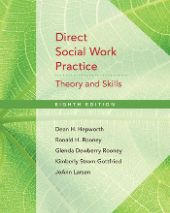
Free Books for Social Workers & Social Work Students
Understanding and Using Theory in Social Work “Understanding and Using Theory in Social Work” provides essential guidance for student social workers navigating the complexities of theory and practice in their…

Explaining ADHD: Videos for Children & Teens
What is ADHD? This animated video, narrated by Molly, provides a child-friendly explanation of ADHD, aiming to educate and dispel misconceptions. It offers valuable insights into the condition for school…
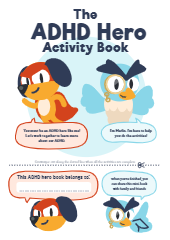
Understanding ADHD: Age-Appropriate Resources for Children & Teens
ADHD for Children: Finding Out About ADHD Booklet This interactive, educational booklet serves as a valuable resource for children diagnosed with Attention Deficit Hyperactivity Disorder (ADHD), providing an engaging and…

It’s OK to Worry about War and Conflict: Activity Booklets for Children & Guides for Caregivers and Professionals
It’s Ok to Worry About War and Conflict: A Resource Pack for Children Under 12 Years Old to Help Manage Difficult Feelings About War and Conflict This is a valuable…
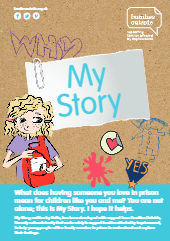
My Story: Emotion Worksheets for Children with Imprisoned Loved Ones
“My Story: Emotion Worksheets for Children with Imprisoned Loved Ones” is an empathetic and practical resource designed to support children navigating the complex emotions associated with having a family member…

Talk with Your Teen About E-cigarettes/Vaping: A Tip Sheet for Parents
“Talk with Your Teen About E-cigarettes: A Tip Sheet for Parents” is a practical and informative resource designed to equip parents with the necessary knowledge and strategies to engage their…

Jasper’s Wish: A Story for a Child with a Parent Struggling with Alcohol
“Jasper’s Wish” by Dr. Jessica Munafò is a touching and insightful children’s book dedicated to helping young readers understand and cope with the complexities of living with a parent who…

Ruby’s Dad: A Story of Living with a Heavily Drinking Parent
“Ruby’s Dad: A Story of Living with a Heavily Drinking Parent” is a compassionate and insightful storybook aimed at supporting children aged 6 to 11 years old who are experiencing…

My Sister Has Died: A Children’s Guide Following the Death of a Sister
“My Sister Has Died: A Children’s Guide Following the Death of a Sister” is an invaluable resource created by the Grace Kelly Childhood Cancer Trust, designed to help children cope…

Sibling Sexual Behaviour Home Safety Plan
The Sibling Sexual Behaviour Home Safety Plan is a crucial resource designed to assist children, young people, their families, and professionals in managing and addressing concerns related to inappropriate, problematic,…

Harmful Sexual Behaviour Practitioner Toolkit & Activity Sheets for Direct Work with Children
The Harmful Sexual Behaviour Practitioner Toolkit, developed by Kirklees Safeguarding Children Partnership, is a comprehensive resource designed for professionals who work with children, young people, and families. This toolkit is…

Young Children and Attachment: Guide for Parents/Carers to Provide a Secure Base
“Young Children and Attachment: A Guide for Parents and Carers to Provide a Secure Base” is an essential resource developed by Rotherham Children & Young People’s CAMHS, aimed at enhancing…

Keeping My Body Safe from Abuse and Neglect: Children’s Guide
This guide is designed to educate children on the critical subjects of abuse and neglect, empowering them with the knowledge to recognise and respond to unsafe situations. This guide covers…

Your Brilliant Brain: A Book for Children/Teens about Complex Childhood Trauma
“Your Brilliant Brain: A Book about Complex Childhood Trauma” is an enlightening, beautifully illustrated book designed to help children understand the effects of complex childhood trauma on their brain and…

Personal Safety Workbook for Children: Understanding Boundaries and Staying Safe
The “Personal Safety Workbook for Children: Understanding Boundaries and Staying Safe” is a thorough educational tool designed to help children understand the importance of personal safety, with a focus on…

How to Talk to Children about Flight, Fight and Freeze Guide for Parents & Professionals
“How to Talk to Children about Flight, Fight, and Freeze” by Billy Brodovsky and Kate Kiernan is a comprehensive guide aimed at helping children become trauma-informed. It shifts the perspective…

It’s Okay to Be Different: Storybook Celebrating Diversity and Acceptance
“It’s Okay to Be Different” by Todd Parr is a wonderfully inclusive and accessible children’s book. In simple and clear language, it celebrates diversity and encourages acceptance of differences. The…

The Bullying Workbook for Teens: Activities to Help You Deal with Social Aggression and Cyberbullying – Free Book
“The Bullying Workbook for Teens: Activities to Help You Deal with Social Aggression and Cyberbullying” is a comprehensive resource designed to help teenagers understand and respond to bullying. It focuses…

How Do You Want Your Kids to Remember You: A Workbook For Fathers Who Have Harmed Their Partners and Families and Want to Change
“How Do You Want Your Kids to Remember You?A Workbook for Fathers Who Have Harmed Their Partners and Families and Want to Change” is a detailed and transformative guide designed…

Sessions Plans & Worksheets for Professionals Working with Child to Parent Violence
The Tandem Toolkit is an essential resource for professionals and practitioners addressing the complex issue of Child to Parent Violence and Adolescent to Parent Violence. This comprehensive toolkit is designed…

Me, Myself and My Body: Free Activity Pack to Learn about Personal Safety
“Me, Myself and My Body: Free Activity Pack to Learn about Personal Safety” is a creatively designed activity pack that focuses on teaching children about body autonomy and safety in…
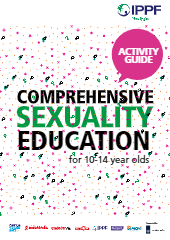
Comprehensive Sexuality Education for 10-14 Year Olds: Activity Guide
The “Comprehensive Sexuality Education for 10-14 Year Olds Activity Guide” is an educational resource designed to provide comprehensive sexuality education to young adolescents. Developed with the support of IPPF, this…

Free The Gender Quest Workbook: A Guide for Teens and Young Adults Exploring Gender Identity
“The Gender Quest Workbook: A Guide for Teens and Young Adults Exploring Gender Identity” is an insightful and supportive resource designed for young people who are questioning or exploring their…

The Big Book of Social Stories – Stories for Everyday Life
The book “The Big Book of Social Stories” by Morgan Gillum is a resource aimed at helping individuals, particularly those with autism, navigate everyday social situations. It provides a collection…
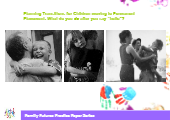
Planning Transitions for Children moving to Permanent Placement: What do you do after you say “hello”?
The guide from Family Futures centres on the transition process for children moving into permanent placements such as adoption. It highlights the connection between positive beginnings and successful long-term outcomes…
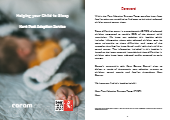
Helping Your Child Sleep: Guide for Adopters & Foster Carers
The “Helping your Child to Sleep” booklet by Kent Post Adoption Service is a resource aimed at assisting families with adopted children who are struggling with sleep. It acknowledges the…

Parenting from a Distance: Guide for Separated Parents Who Live Away from Their Children
“Me and My Kids: Parenting from a Distance” is a practical guide for separated parents who spend a lot of time away from their children, often due to separation, divorce,…

Changing Anxious Thoughts Worksheets for Children
The “Changing Anxious Thoughts Worksheets for Children” are a valuable resource designed to assist kids in effectively managing and transforming negative or anxious thoughts into more positive and constructive ones….

Life Story Work & People with Dementia: Resource Pack
The “Told in South Yorkshire – Life Story Work & People with Dementia” resource pack is a comprehensive guide for professionals and caregivers engaged in life story work for dementia…

50+ Free Anxiety Tools and Resources
Please visit our new website, www.anxietyhelpbox.com, which is specifically dedicated to listing free worksheets, booklets, advice sheets, assessment templates/checklists, storybooks, videos, guides, and workbook downloads. 1) ANXIETYHELPBOX.COM WEBSITE Click here…
Copyright © 2024 Free Social Work Tools and Resources: SocialWorkersToolbox.com

IMAGES
VIDEO
COMMENTS
This textbook was created to provide an introduction to research methods for BSW and MSW students, with particular emphasis on research and practice relevant to students at the University of Texas at Arlington. It provides an introduction to social work students to help evaluate research for evidence-based practice and design social work research projects. It can be used with its companion, A ...
The canonical Handbook is completely updated with more student-friendly features. The Handbook of Social Work Research Methods is a cutting-edge volume that covers all the major topics that are relevant for Social Work Research methods. Edited by Bruce Thyer and containing contributions by leading authorities, this Handbook covers both ...
I thus see this excellent book and as an essential tool for every social work academic, student or practitioner's methodological toolbox. It makes an important contribution to social work for those who want to learn more about how to read, learn and conduct social work research. I agree totally with the authors' (2017, p. 7) claim that:
First Edition. Social Work Research Methods is a step-by-step journey through the process of conducting research. With over 30 years of teaching experience, author Reginald O. York helps readers discover how research can enable them to better serve clients in the field. Each chapter features a hands-on approach to producing research, with ...
Measurement tools are instruments used by researchers and practitioners to aid in the assessment or evaluation of subjects, clients or patients. The instruments are used to measure or collect data on a variety of variables ranging from physical functioning to psychosocial wellbeing. Types of measurement tools include scales, indexes, surveys ...
Social Work Research publishes exemplary research to advance the development of knowledge and inform social work practice. Find out more. Advertisement. Latest articles "The Air Is Being Sucked Out of the Room": Experiences of Social Work Students of Color with Antiracism Education in the Classroom and Practicum
Research on Social Work Practice (RSWP), peer-reviewed and published eight times per year, is a disciplinary journal devoted to the publication of empirical research concerning the assessment methods and outcomes of social work practice. Intervention programs covered include behavior analysis and therapy; psychotherapy or counseling with individuals; case management; and education.
Click to continue
Database best for social work students: . EBSCOhost: Full-text database. Under "Choose Databases" select all available options. There is a box to check if you only want to search for peer-reviewed articles. On this page, you will find a lot of options to start your research, but these are not all of the databases that you have access to as a ...
Social work research means conducting an investigation in accordance with the scientific method. The aim of social work research is to build the social work knowledge base in order to solve practical problems in social work practice or social policy. Investigating phenomena in accordance with the scientific method requires maximal adherence to ...
Abstract. Data science is merging of several techniques that include statistics, computer programming, hacking skills, and a solid expertise in specific fields, among others. This approach represents opportunities for social work research and intervention. Thus, practitioners can take advantage of data science methods and reach new standards ...
Online Tools to Manage Your Research. EasyBib This bibliography generator pulls citation information from your sources, generates citations, and creates a working bibliography.; Endnote Endnote serves as a powerful organizing tool for students who want to keep digital copies of the sources alongside their citation information.; Mendeley Mendeley offers both a unique method for organizing your ...
Social work researchers will send out a survey, receive responses, aggregate the results, analyze the data, and form conclusions based on trends. Surveys are one of the most common research methods social workers use — and for good reason. They tend to be relatively simple and are usually affordable.
The term "survey" is used in research design and involves asking questions and collecting and using tools to analyze data. [2] Specifically, the term "survey" denotes the overall strategy or approach to answering questions. Conversely, the term questionnaire is the actual tool that collects data.
Conducting social work research requires access to large amounts of data supplied by study participants, ... resources such as The Kellogg Foundation Logic Model Development Guide and the CDC Framework for Program Evaluation in Social Work can offer guidance and tools for constructing and utilizing robust evaluation frameworks. 12,13.
The Community Tool Box. Millions of people use the Community Tool Box each year to get help taking action, teaching, and training others in organizing for community development. ... It provides an introduction to social work students to help evaluate research for evidence-based practice and design social work research projects. It can be used ...
As an invaluable tool in the social work toolkit, in-depth interviews serve to amplify the voices of individuals and communities, enriching the profession's capacity for holistic and person-centered interventions. ... Integrating qualitative and quantitative data in social work research is a strategic and holistic approach that combines the ...
A research question should be specific, focused, and concise. To develop a research question, start with a general topic of interest to you. You'll want to do some preliminary and background research on this topic to think through what specific questions you might have. Examples: Sample Topic: impact of social media on adolescent physical activity
Qualitative Social Work. Qualitative Social Work provides a forum for those interested in qualitative research and evaluation and in qualitative approaches to practice. The journal facilitates interactive dialogue … | View full journal description. This journal is a member of the Committee on Publication Ethics (COPE).
The aim of this article was to examine how the application of human-centred design (HCD) tools (Steen, Citation 2008) within social work research facilitated what Tuck (Citation 2009) described as "desire-centered" research (DCR), serving to advance antioppressive practice for the benefit of research participants.According to Tuck, DCR accounts for the complex and contradictory nature of ...
It is relevant to the study of psychology and related fields, such as psychiatry, management, business, education, social science, neuroscience, law, medicine, and social work. BioMed Central All original research articles published by BioMed Central are made freely and permanently accessible online immediately upon publication.
In this article, we will discuss the best research tools that every social work student should know about. Understanding the Importance of Research in Social Work. Research is a fundamental component of social work, and it serves several purposes. Firstly, it helps to shape social policy and practice by providing evidence-based knowledge.
Free direct work, assessment and interventions resources for children's social workers . Offering 400+ free tools for social workers, including guides, worskeets, booklets, children's stories, and videos for direct work with children. Find resources for domestic abuse, mental health, substance use, adoption and fostering and more.
It also provides information on the nature of the social work research and scope of social work research. Unit 2 is on Research Review in Social Work. This unit deals with review of research in social work: international perspective and national perspective; emerging trends, role of research in social work, programme evaluation, and role of NGOs
Experimental research designs in social work: theory and applications by B. A. Thyer, New York, Columbia University Press, 2023, 400 pp., $140.00 (Hardcover), ISBN ...
New research into B2B content marketing trends for 2024 reveals specifics of AI implementation, social media use, and budget forecasts, plus content success factors. ... All that non-sexy work frees time and resources (human and tech) you can apply to bring your brand's strategies and plans to life. ... Analytics tools (81%) Social media ...